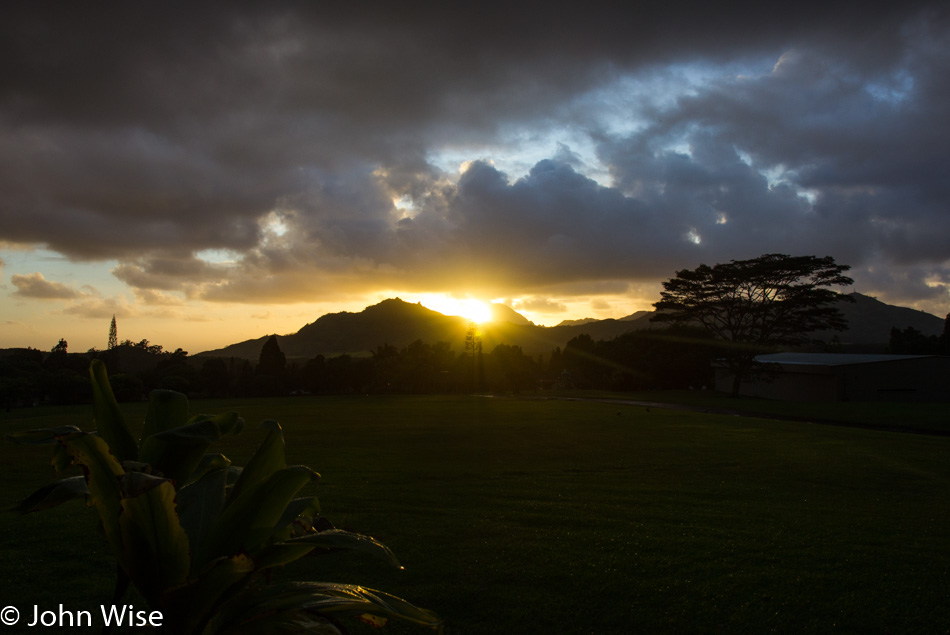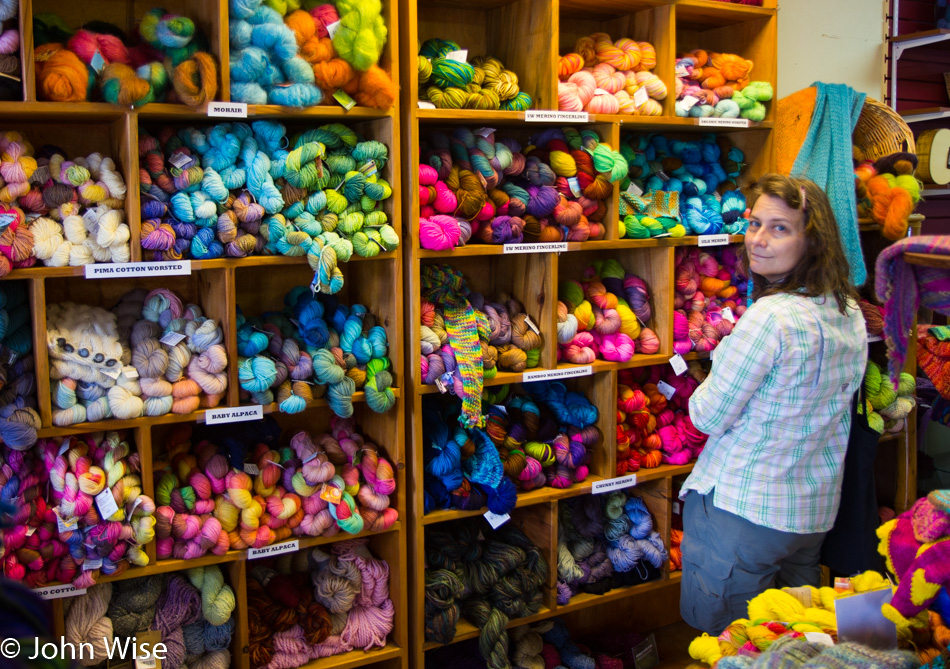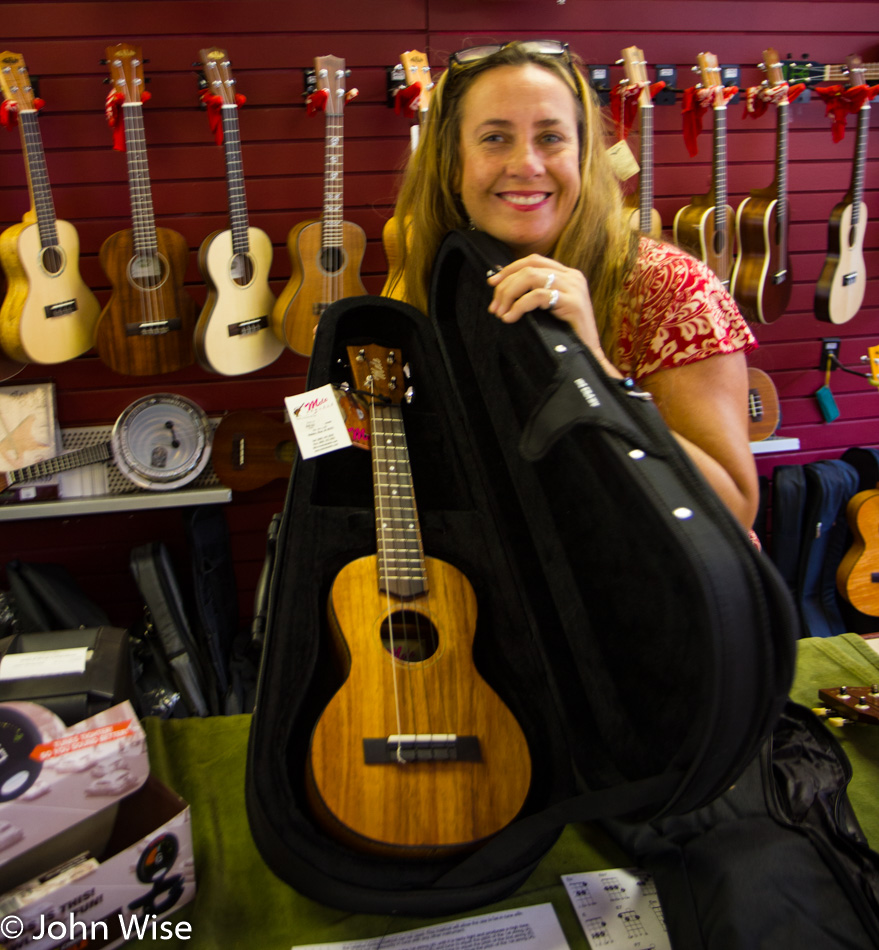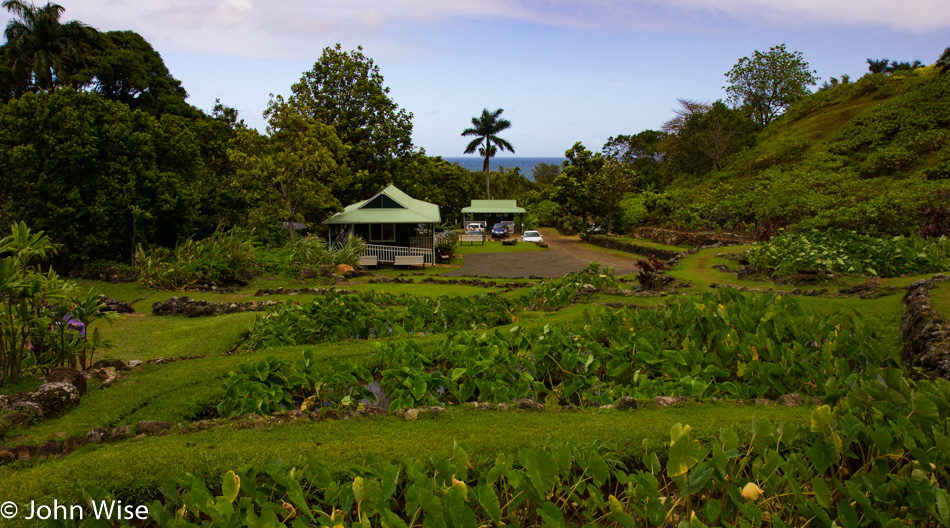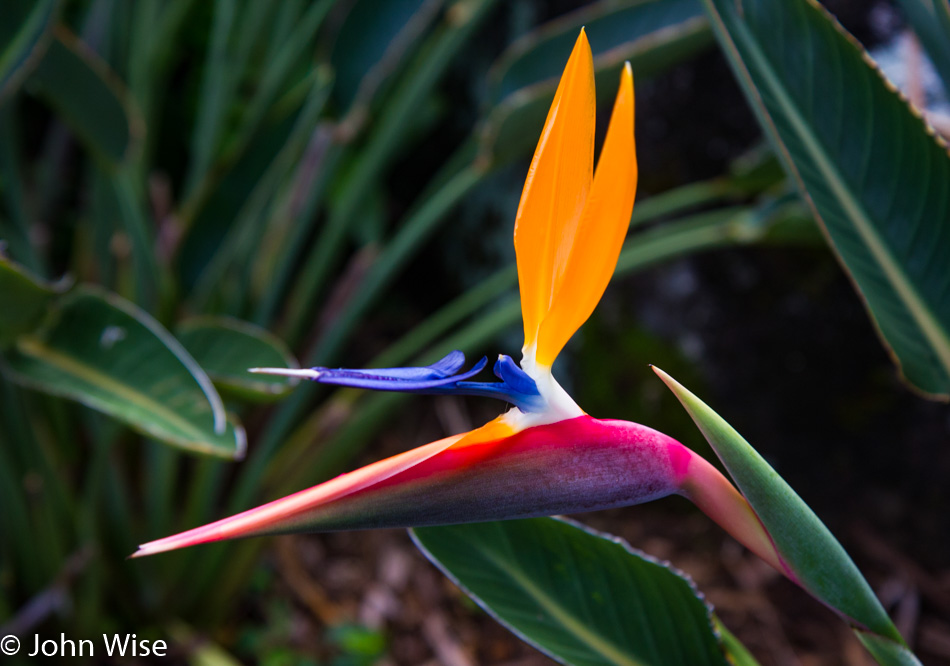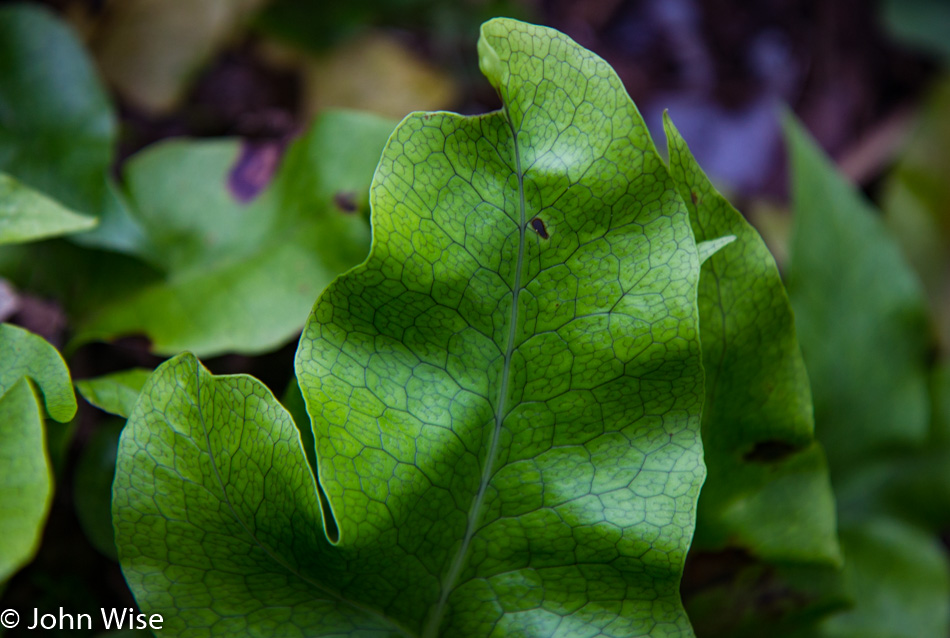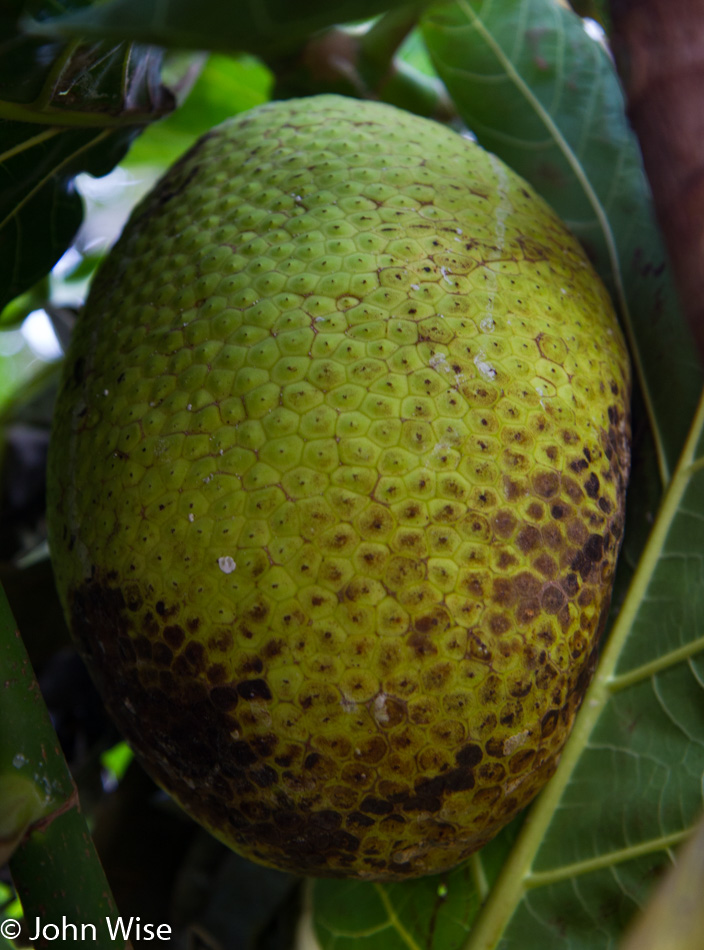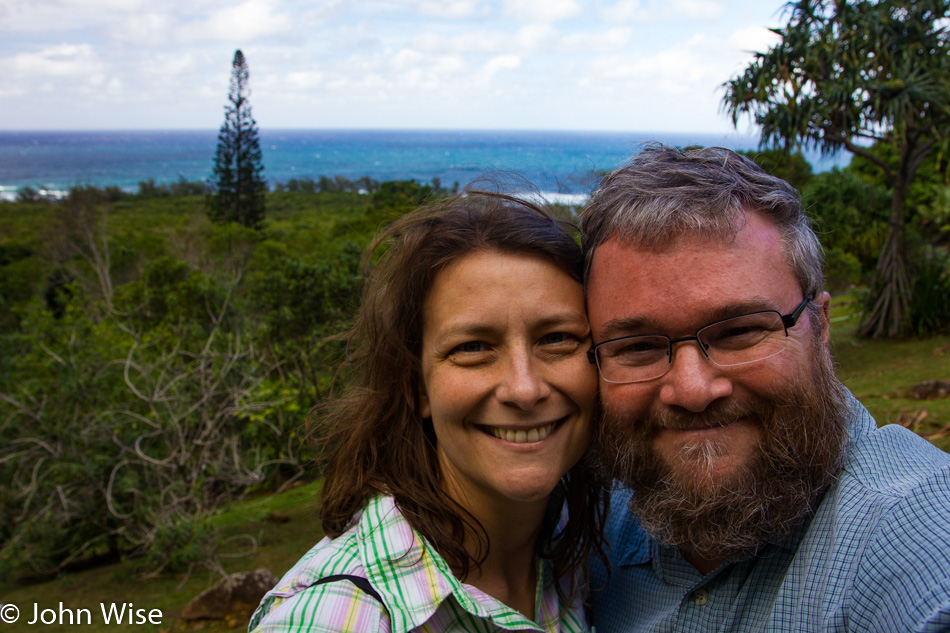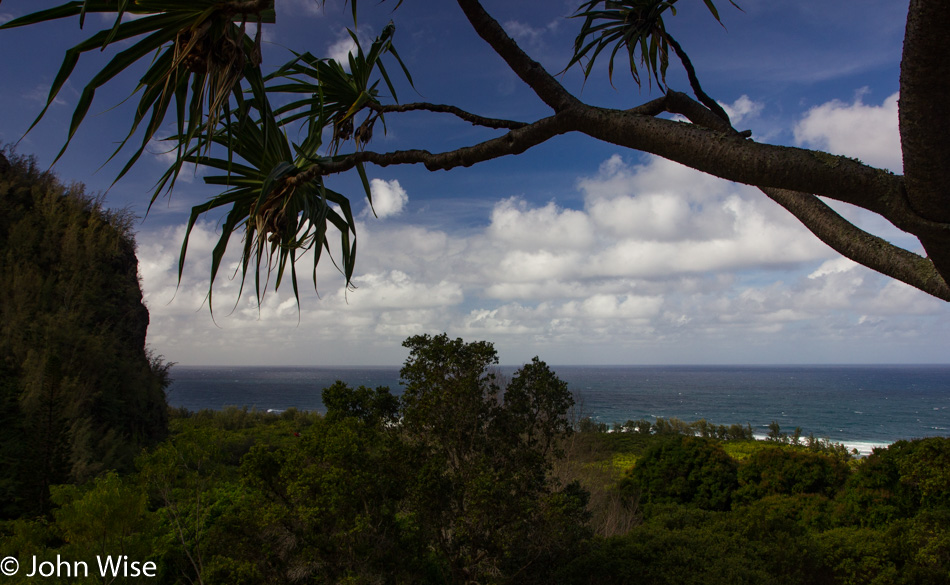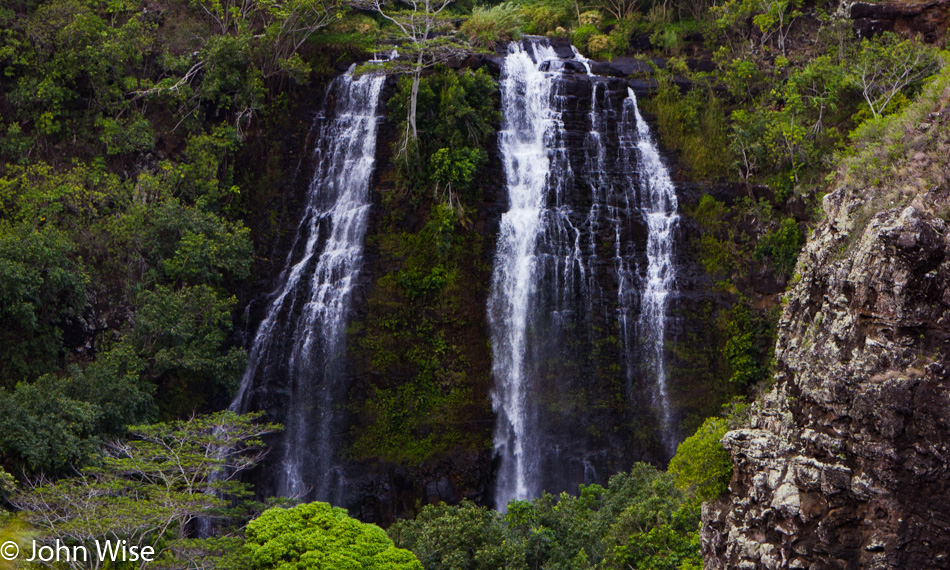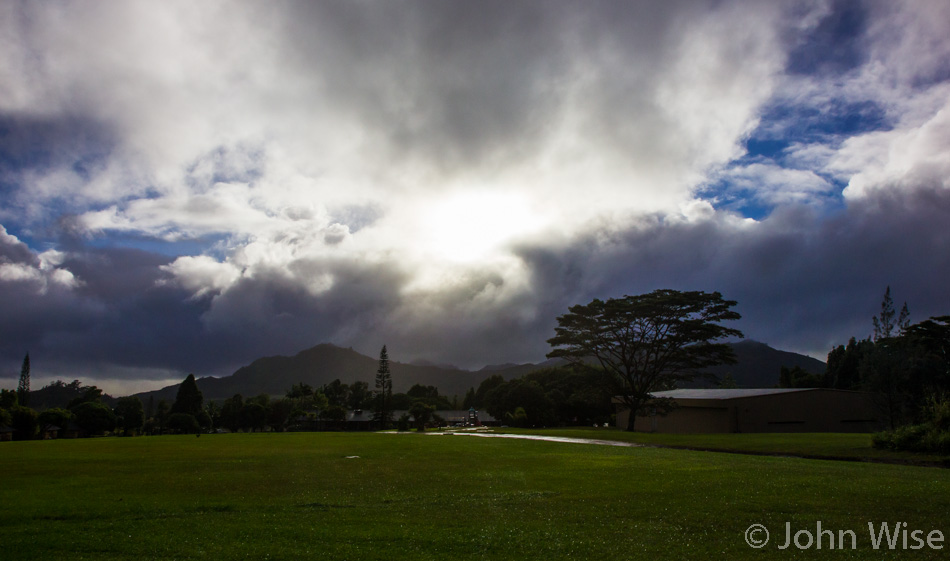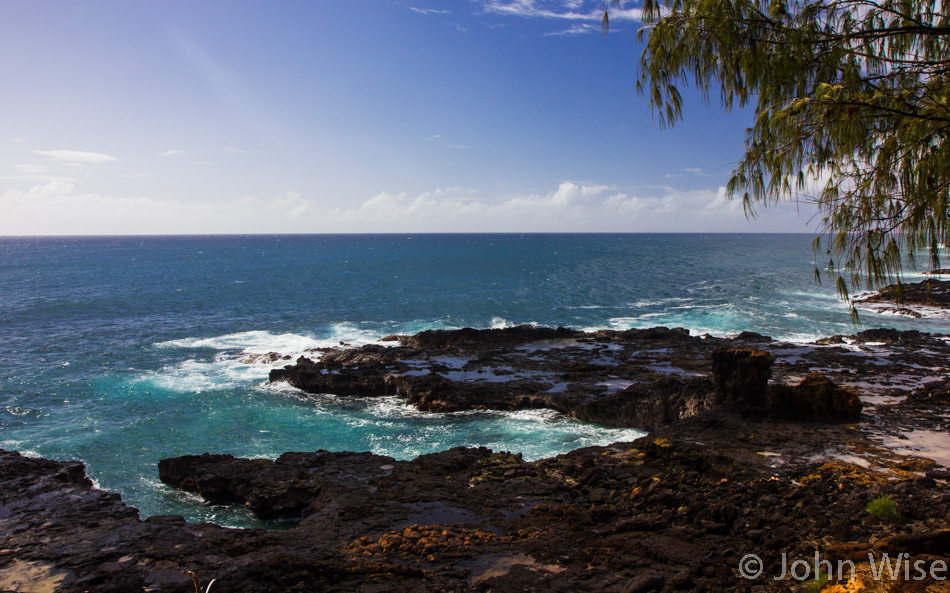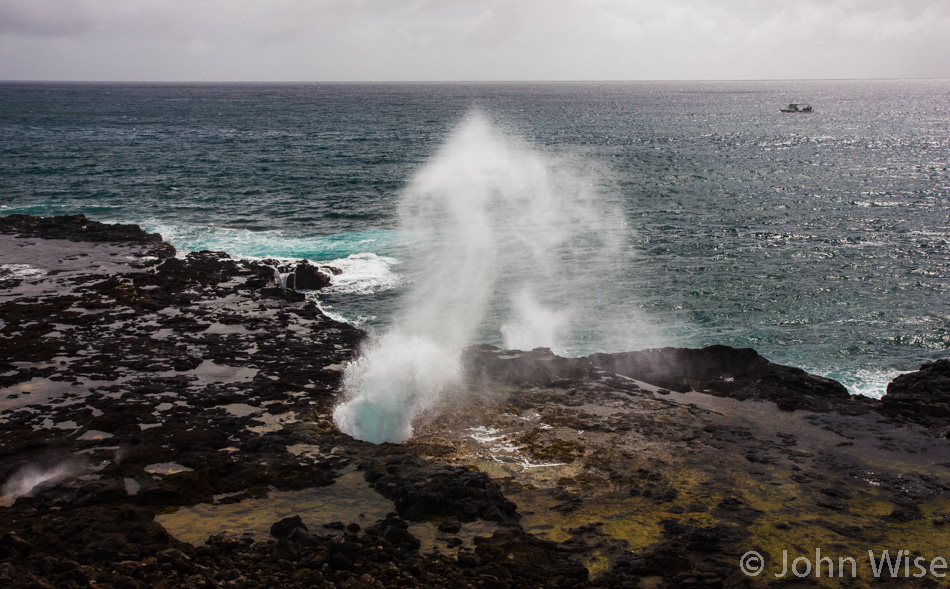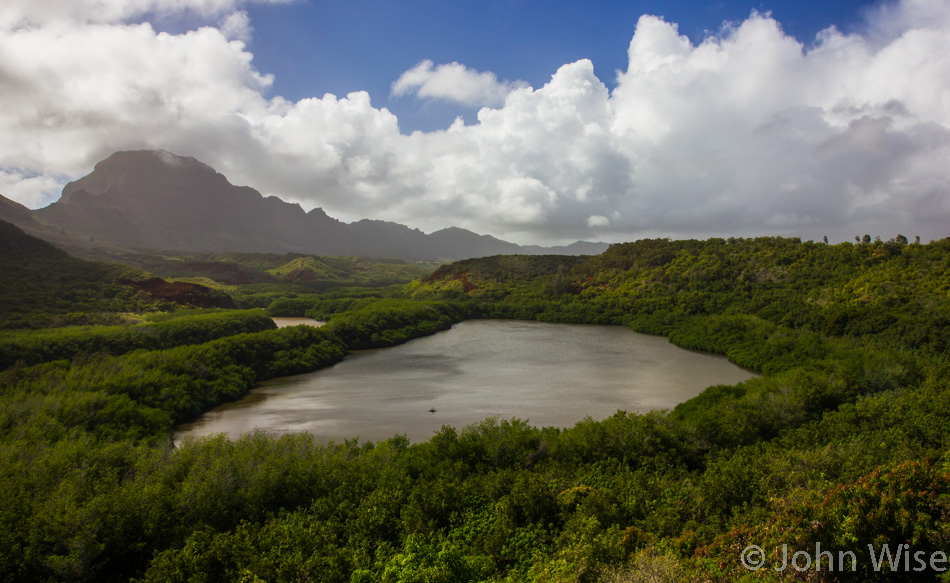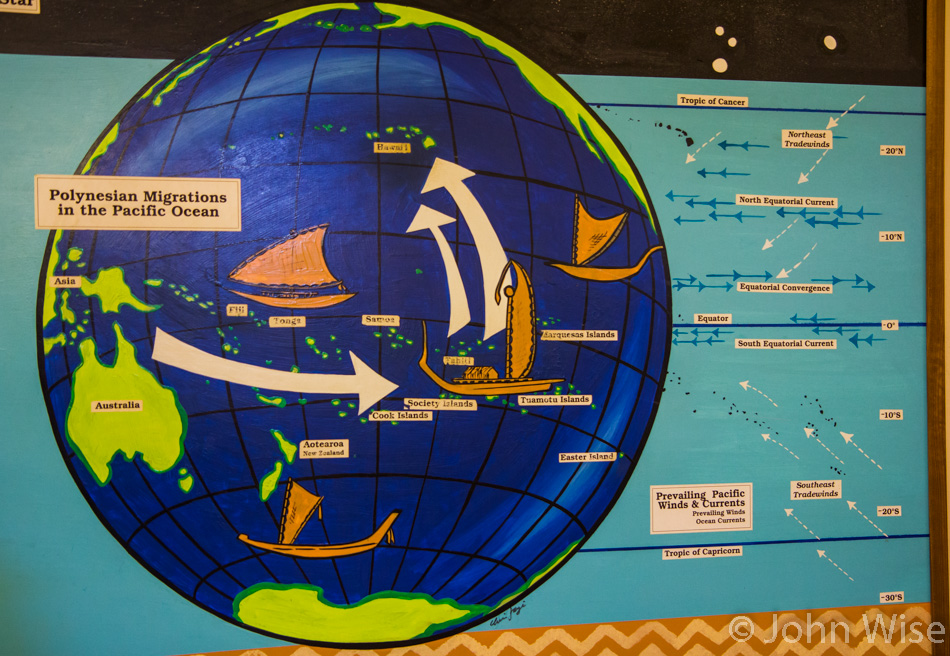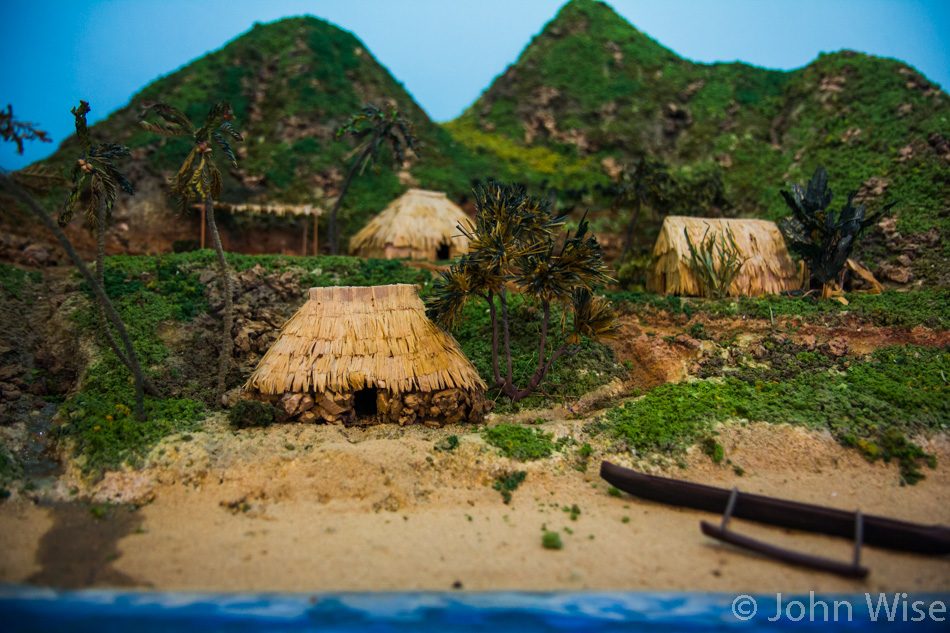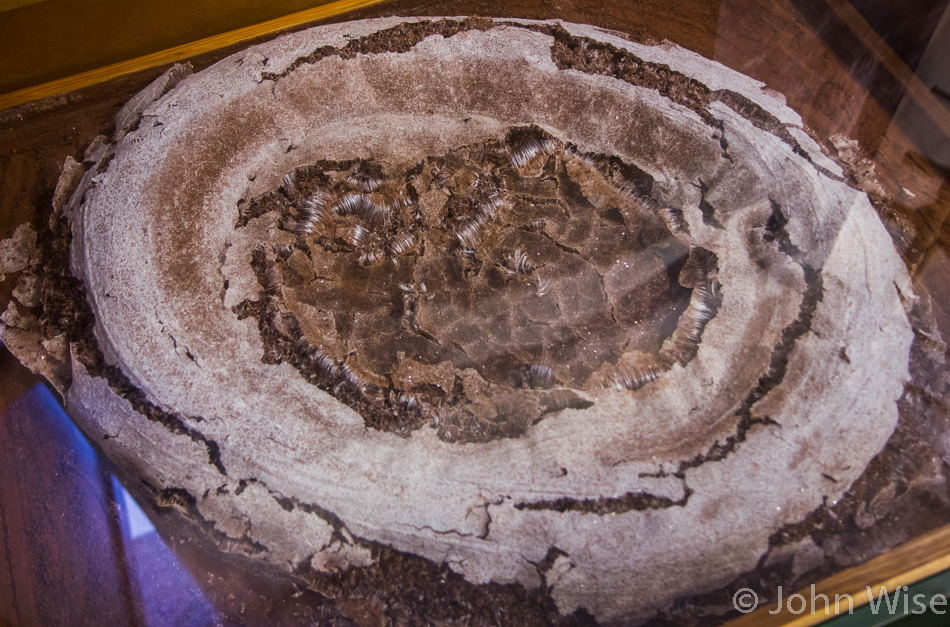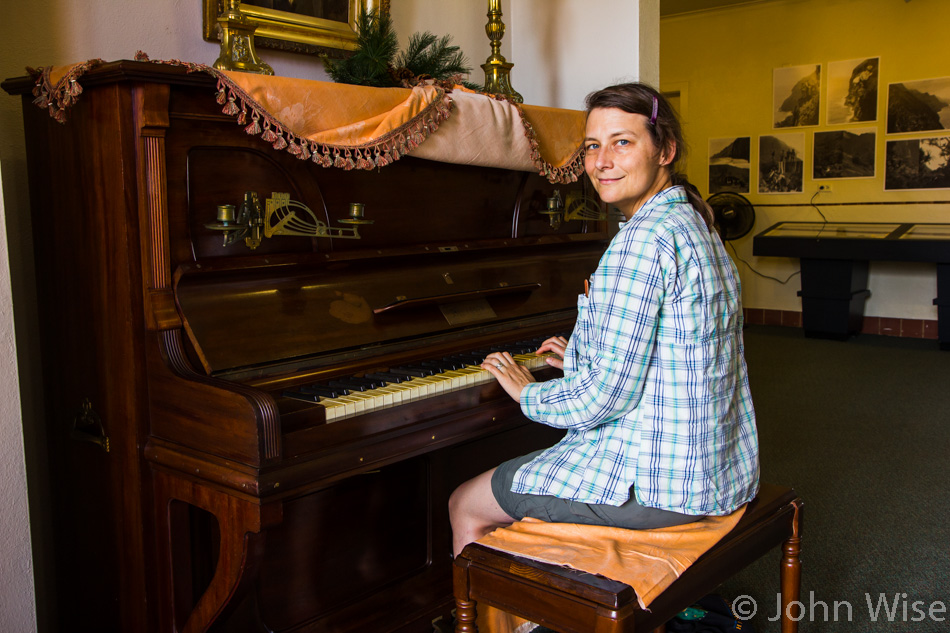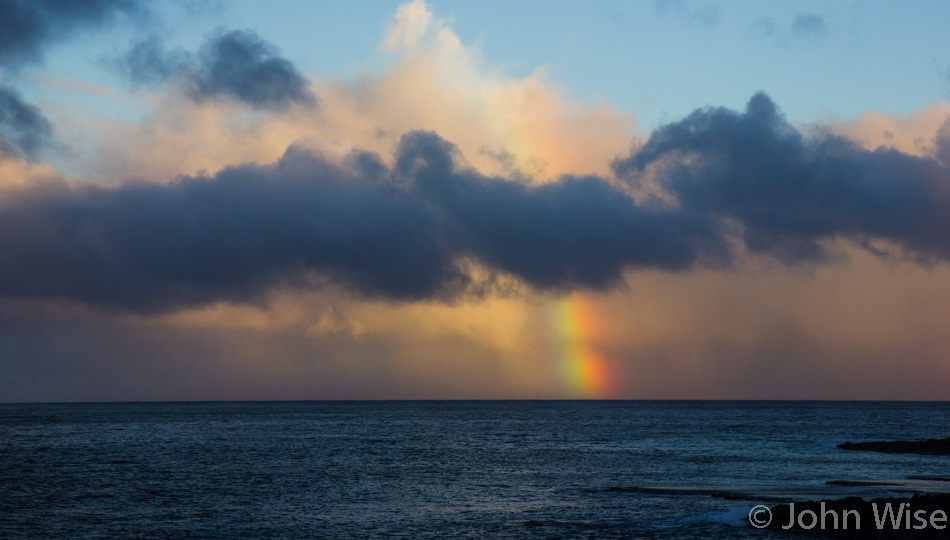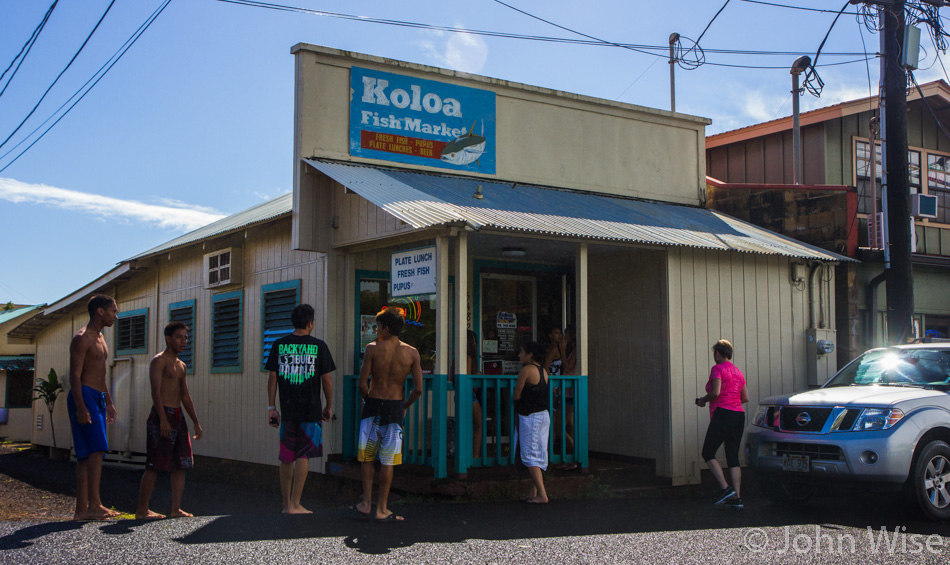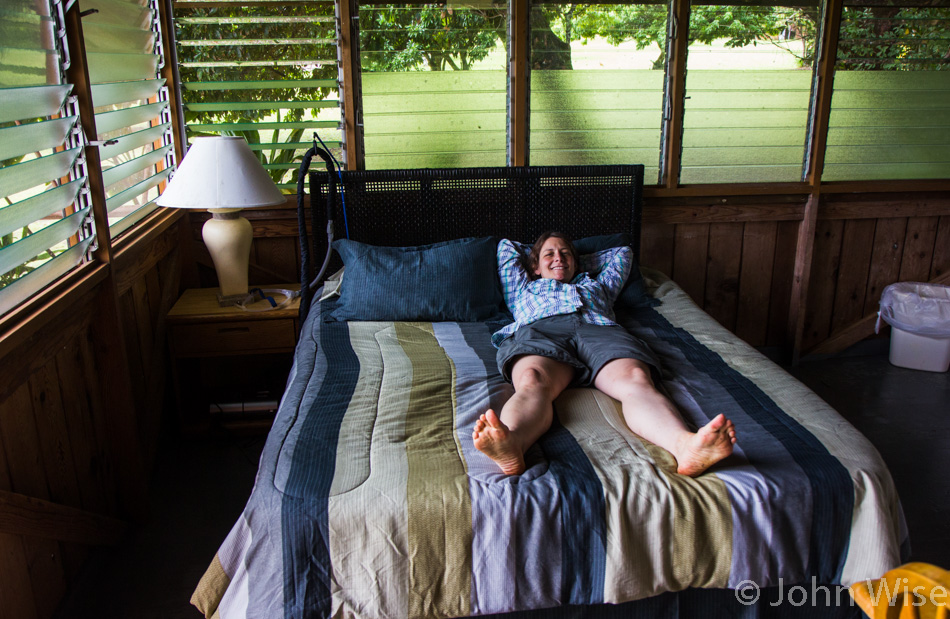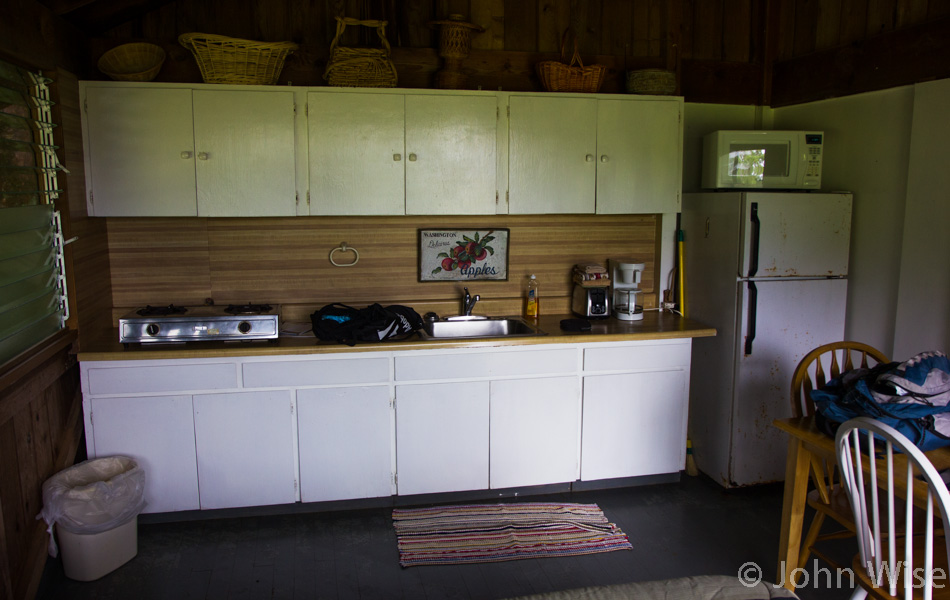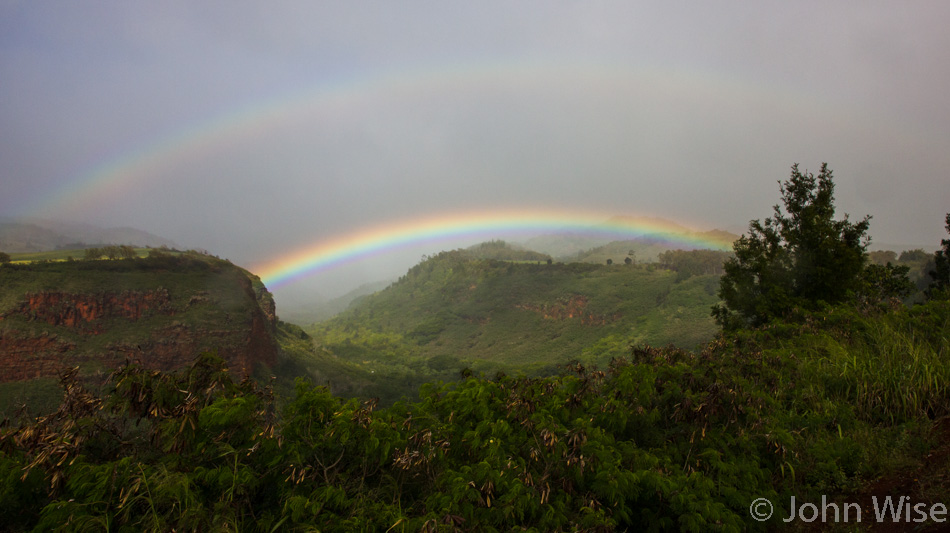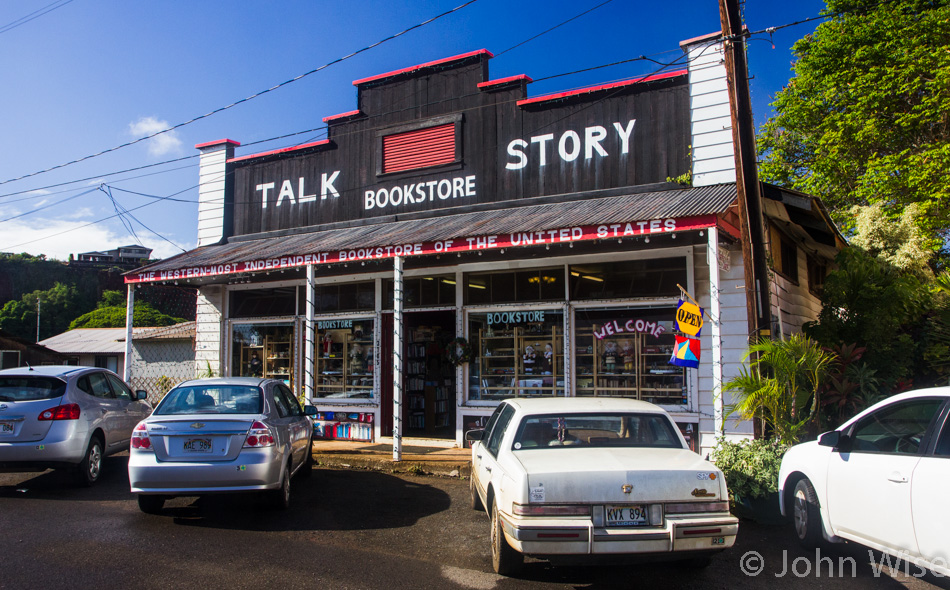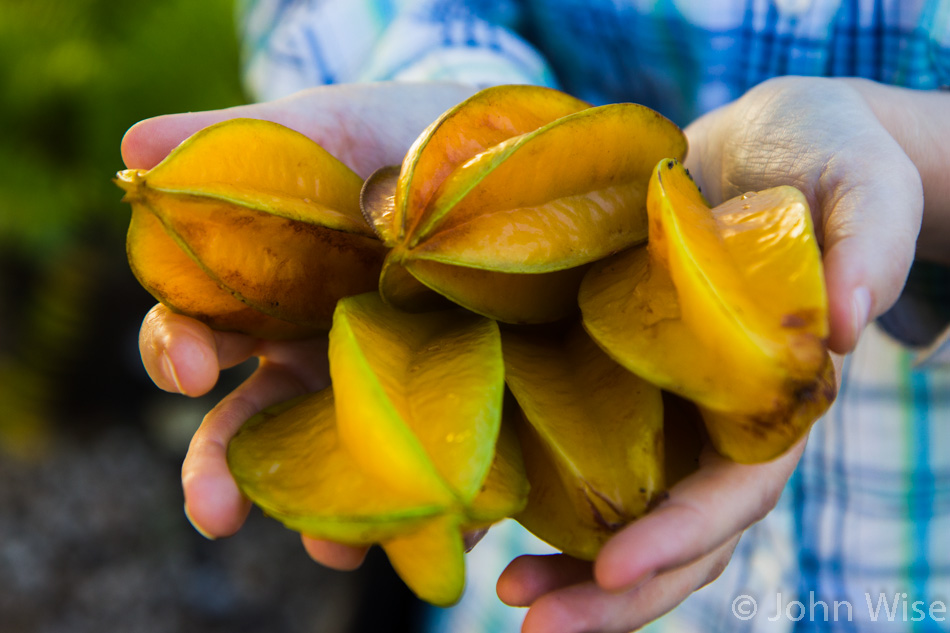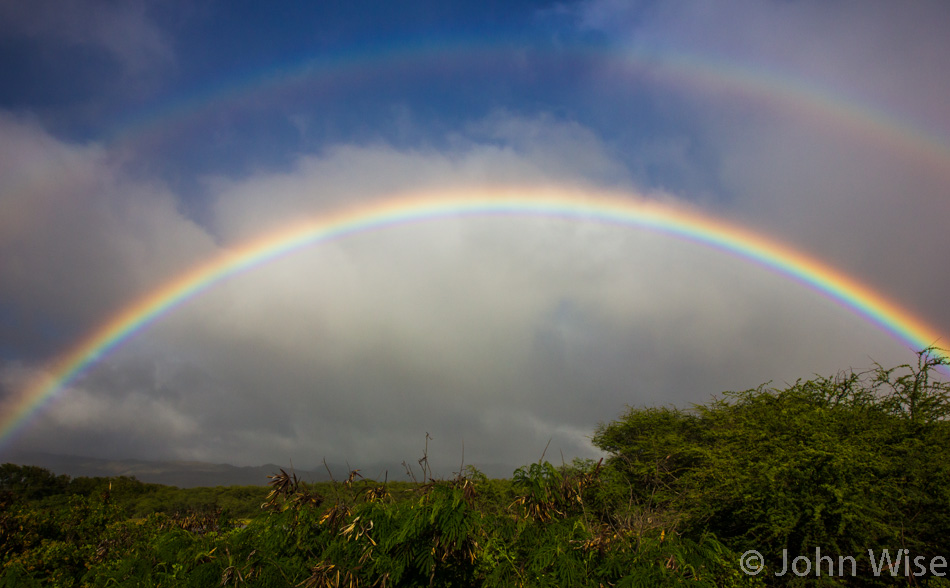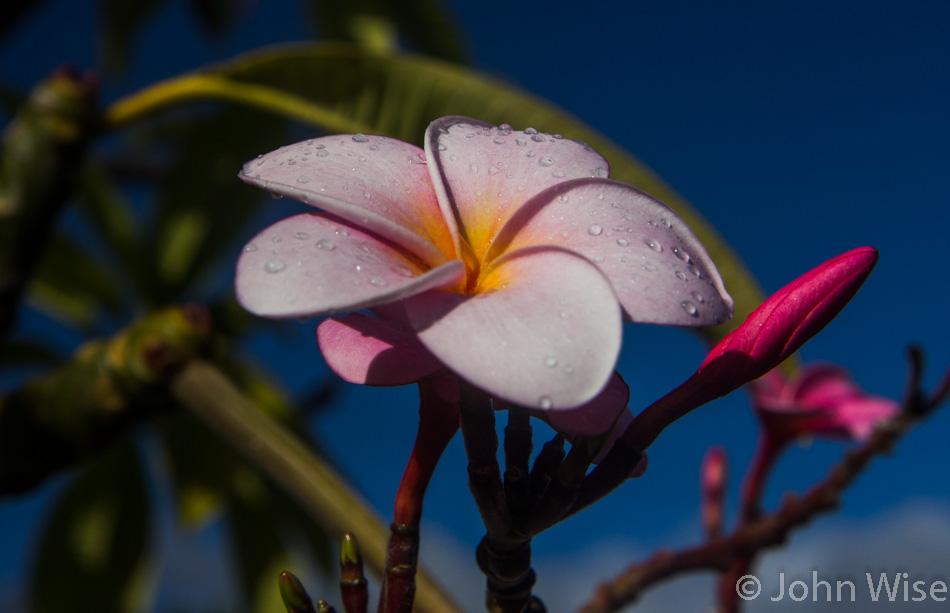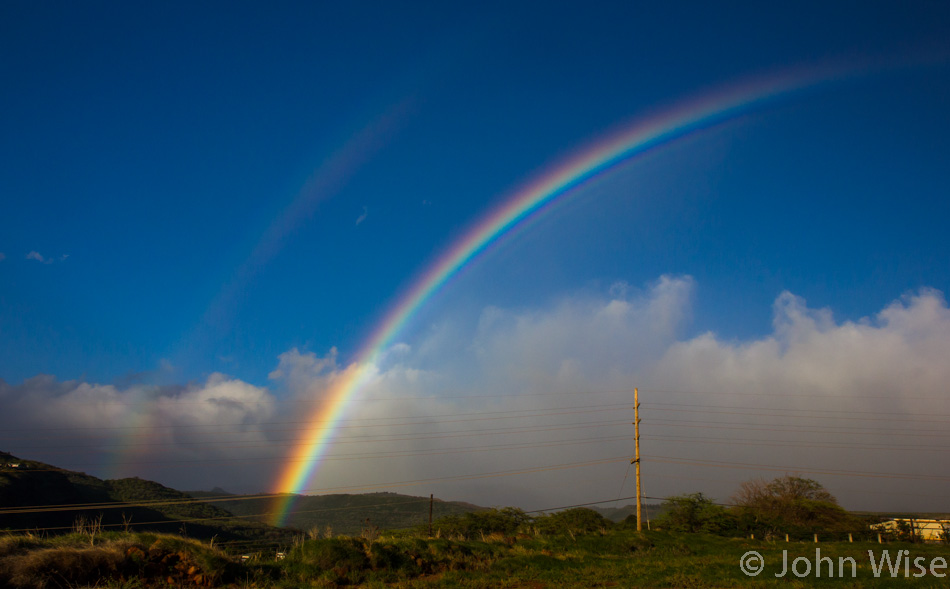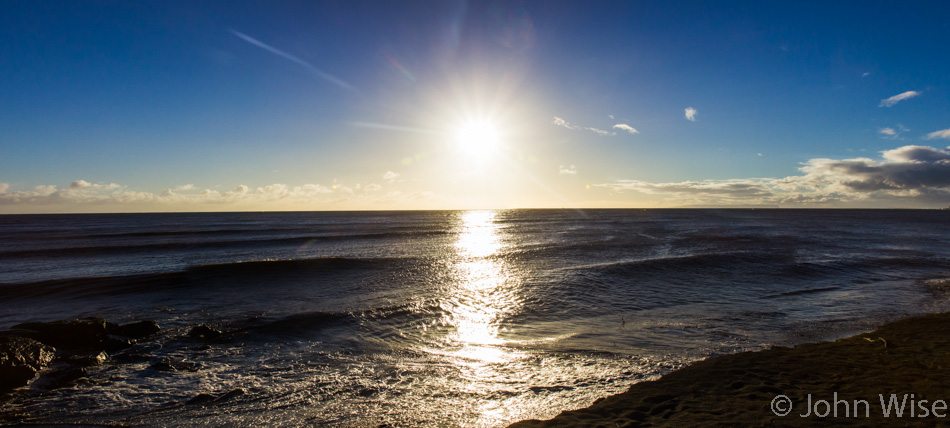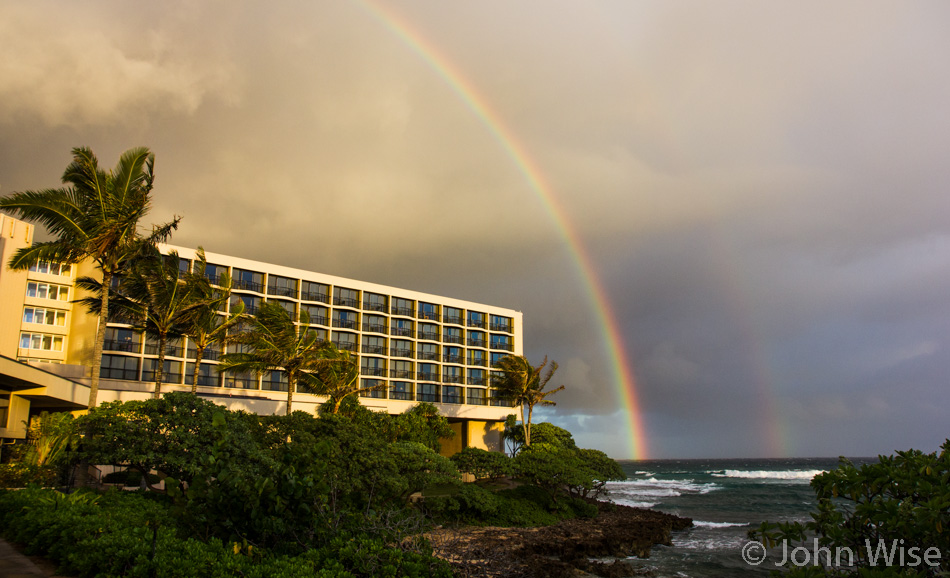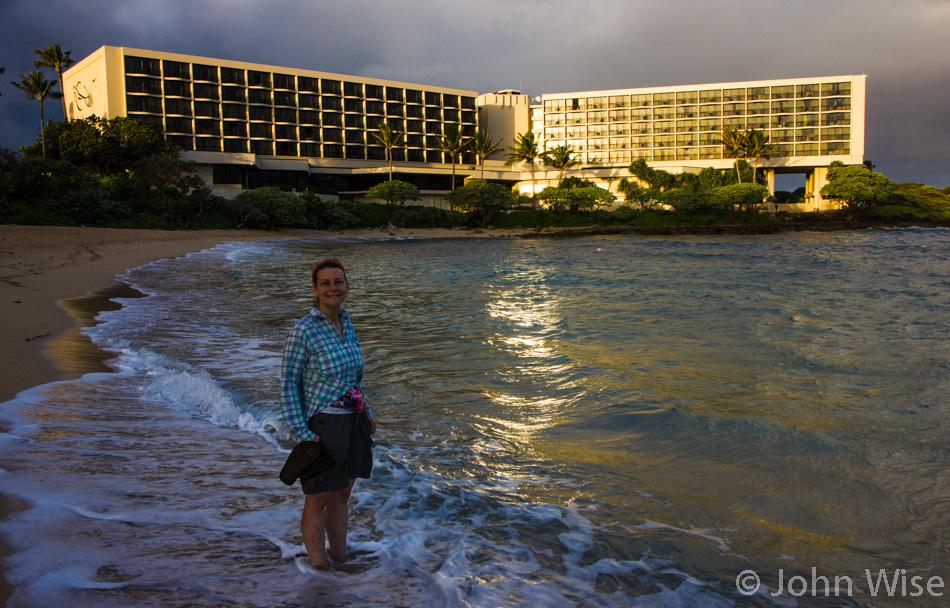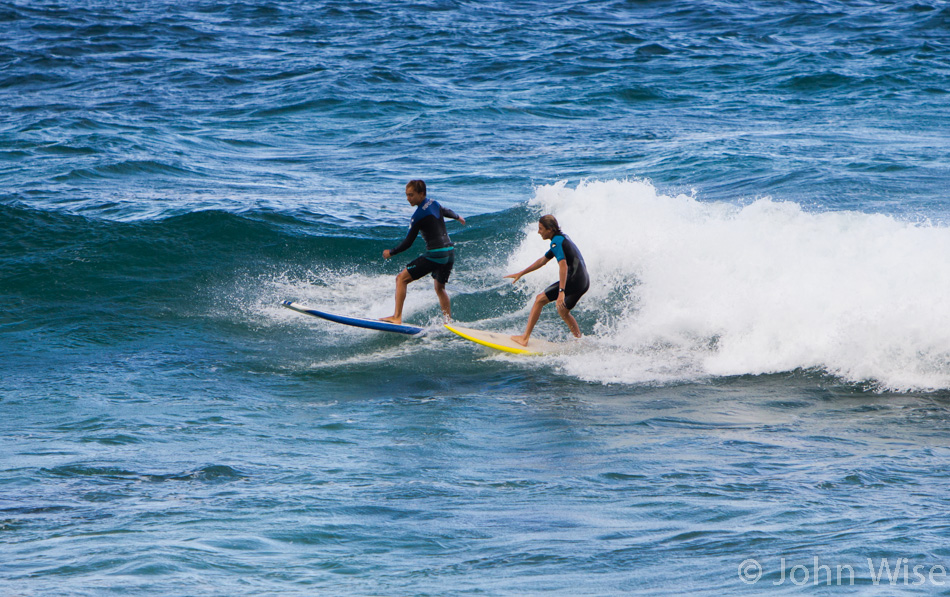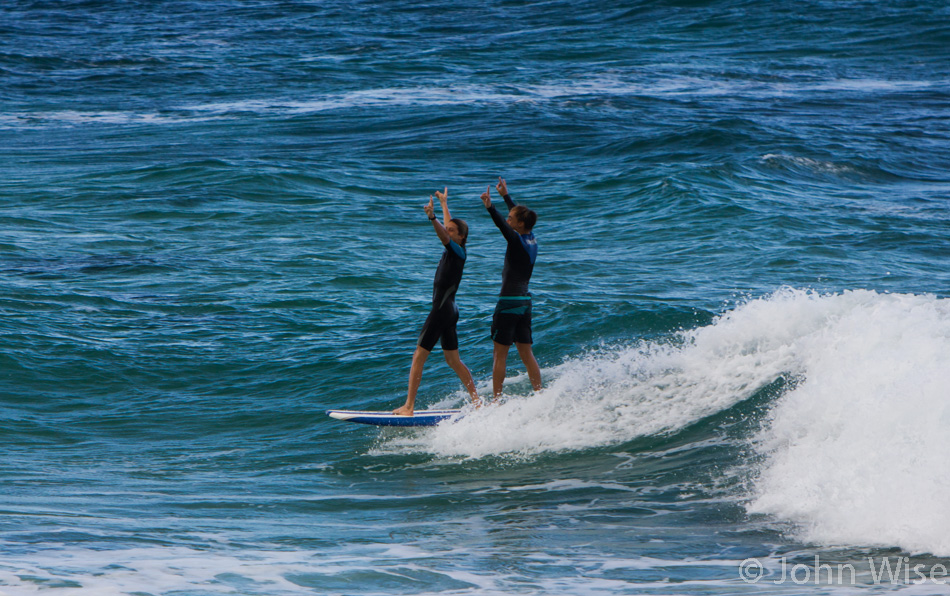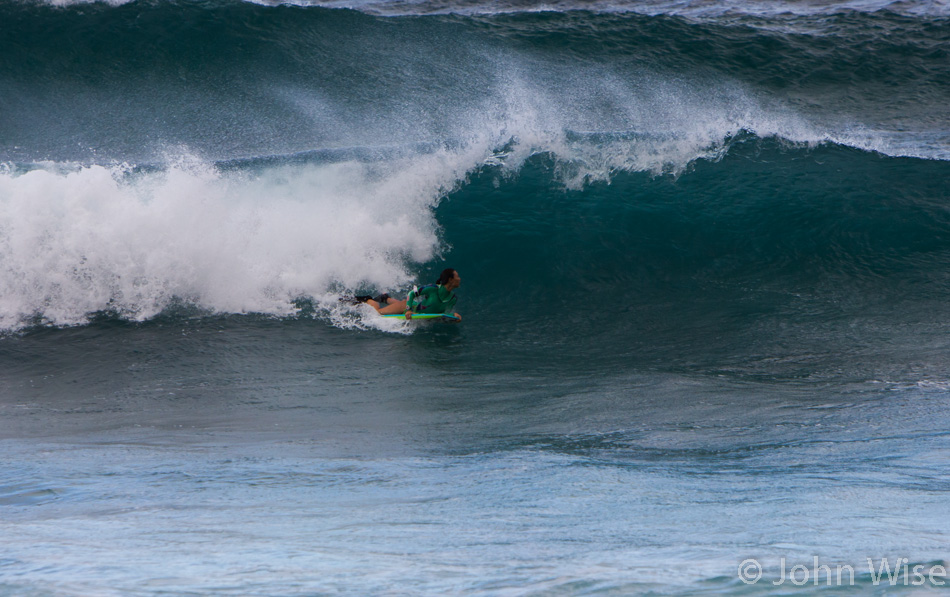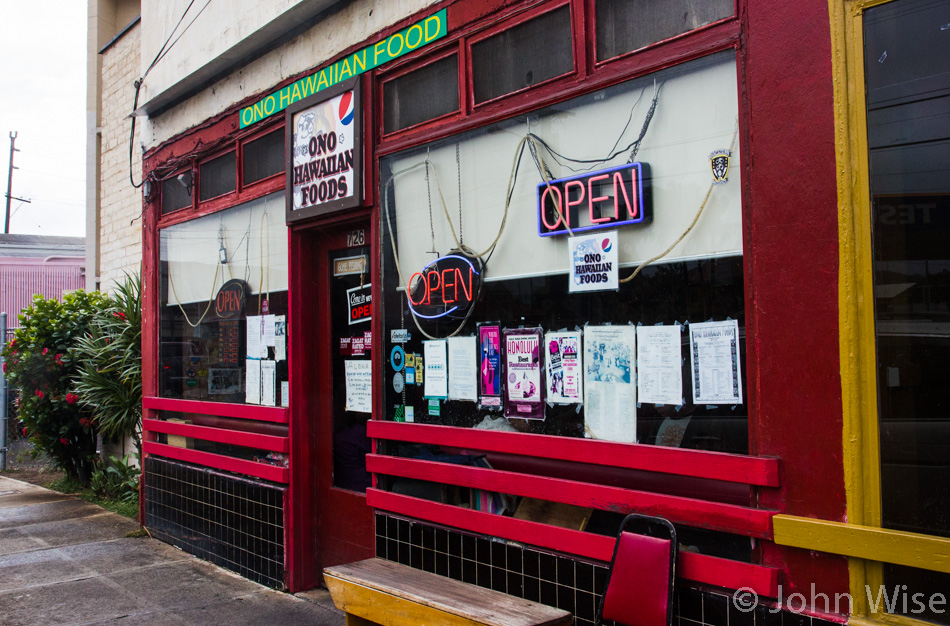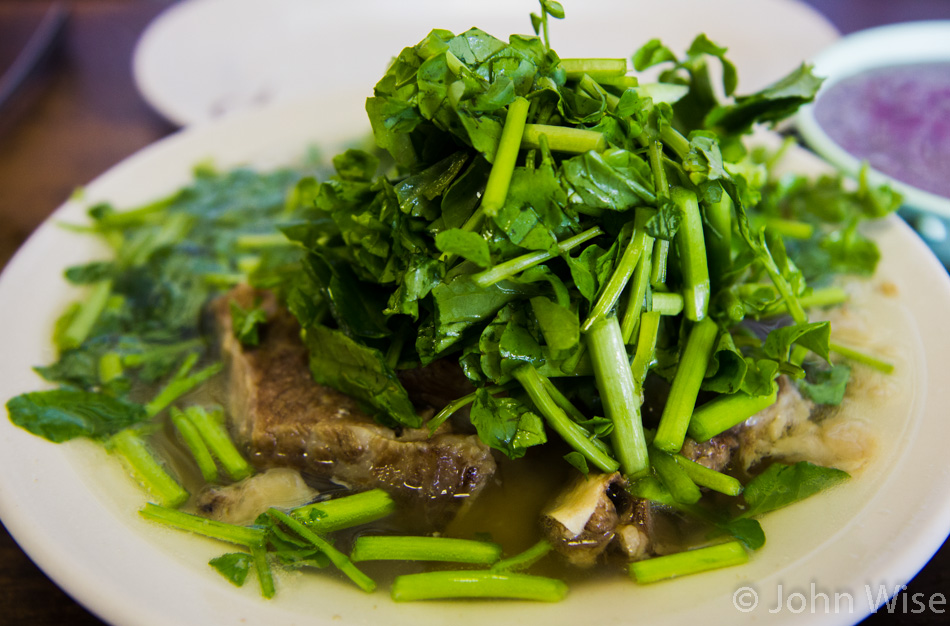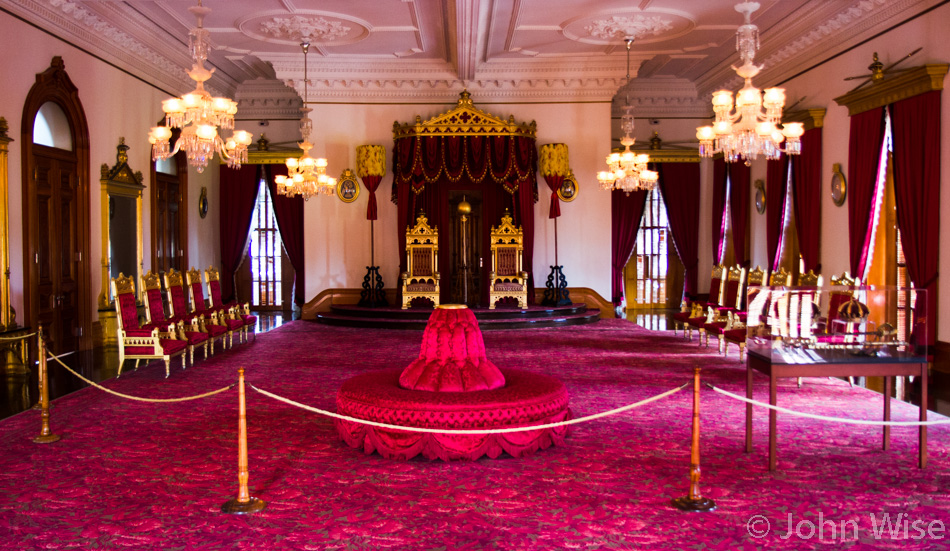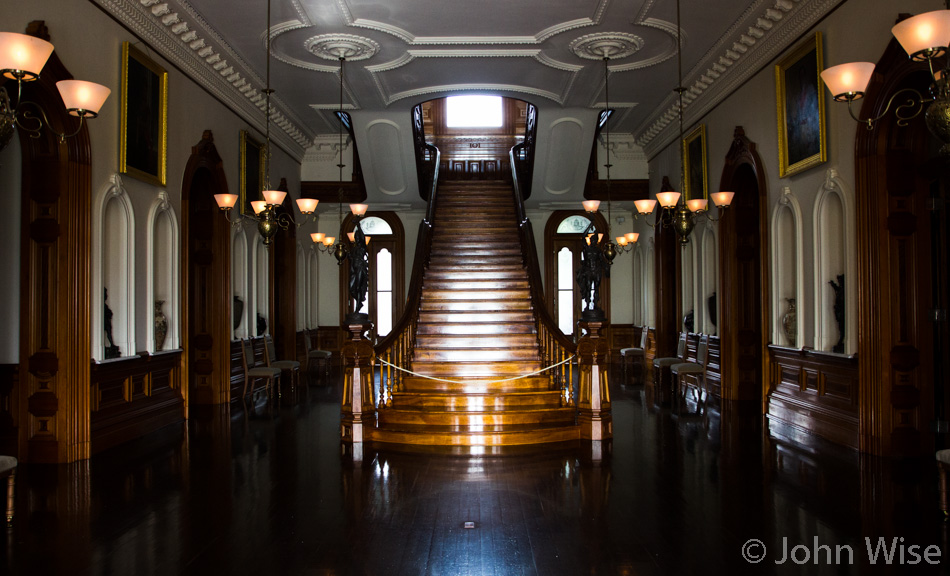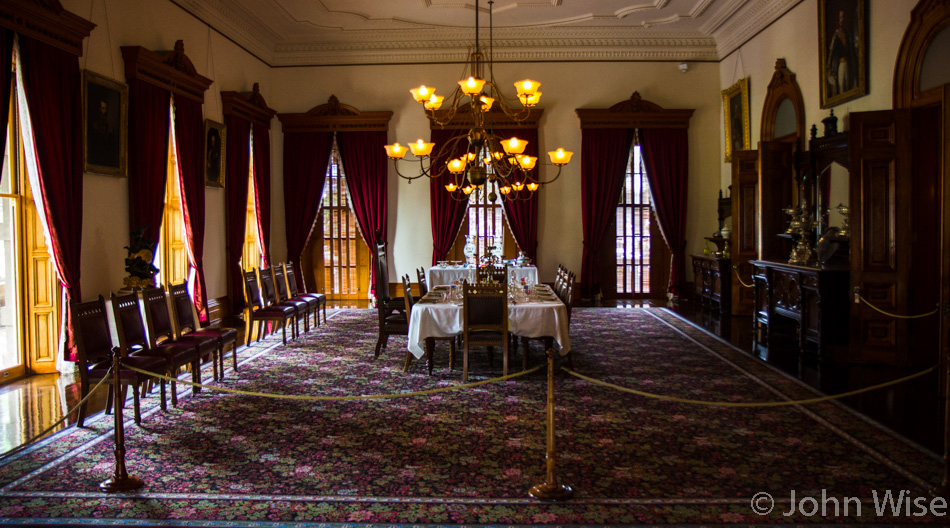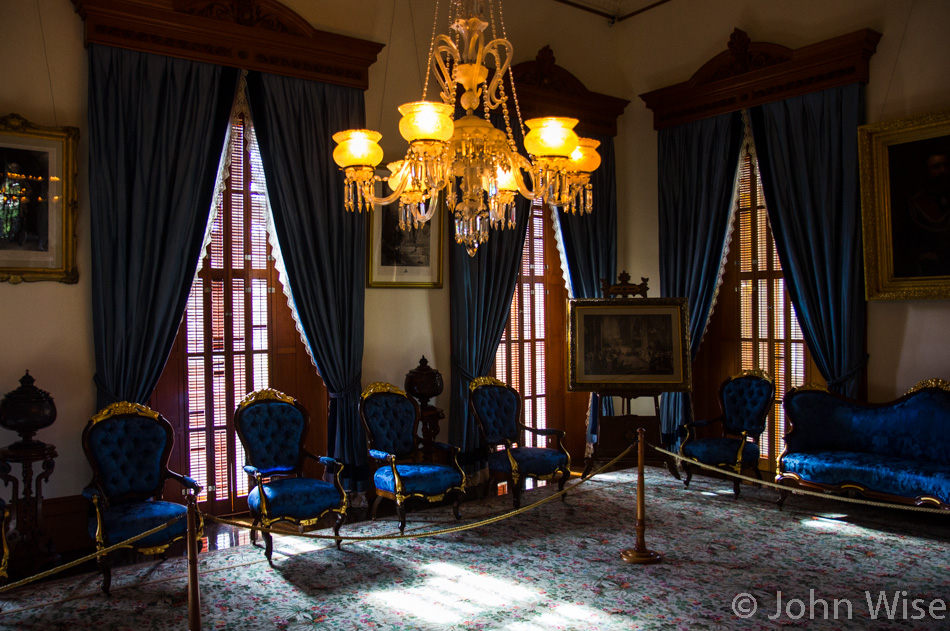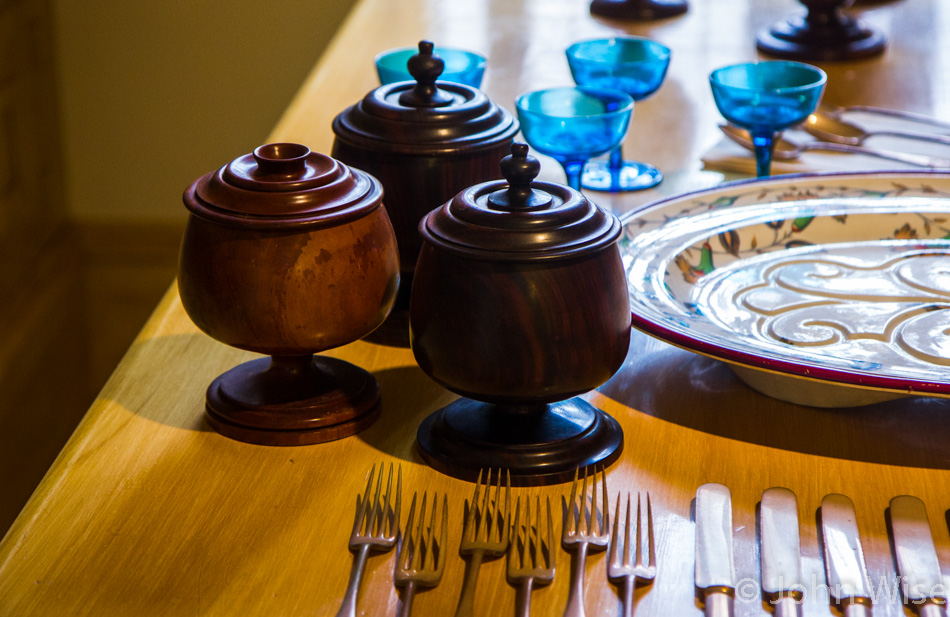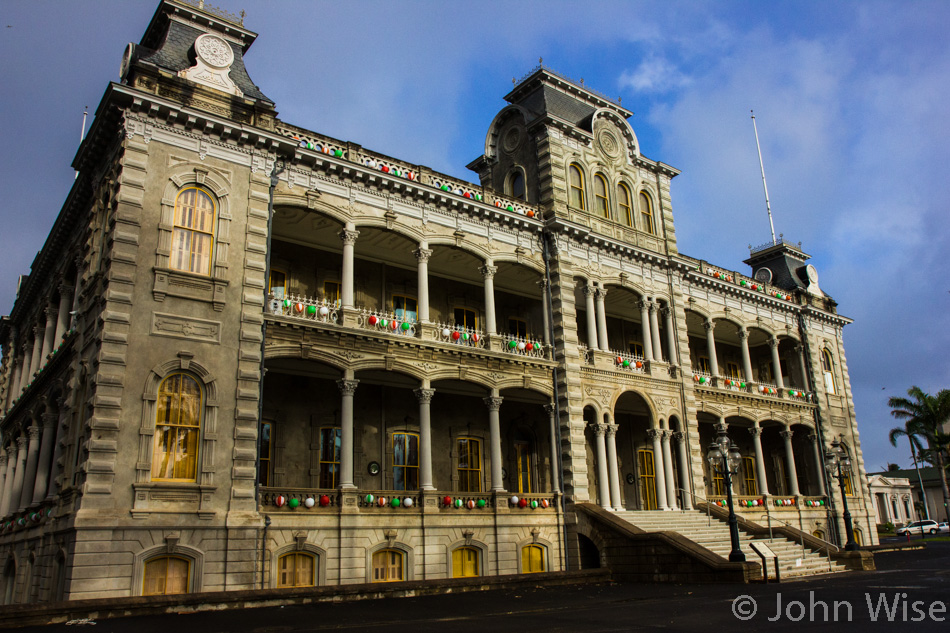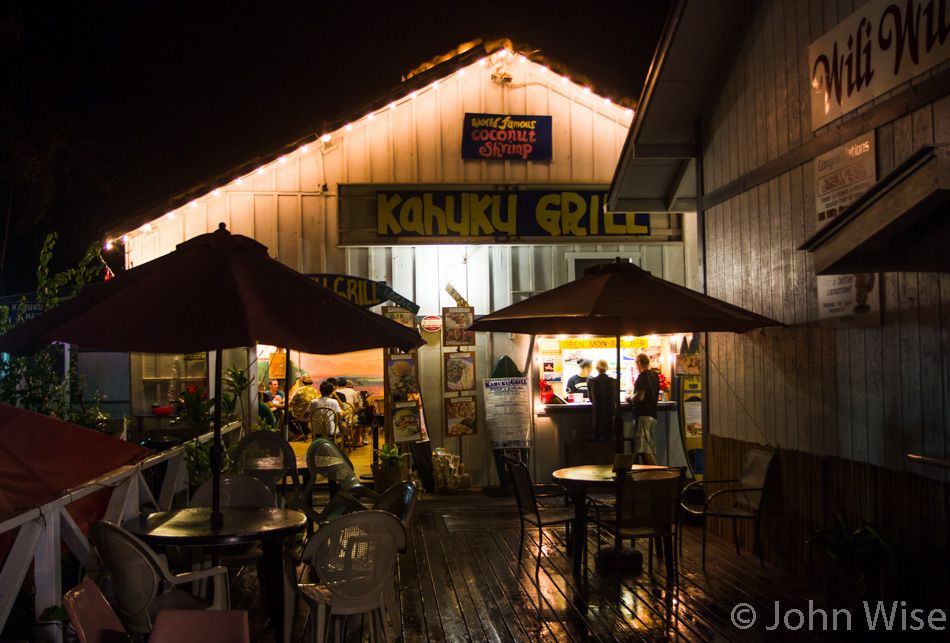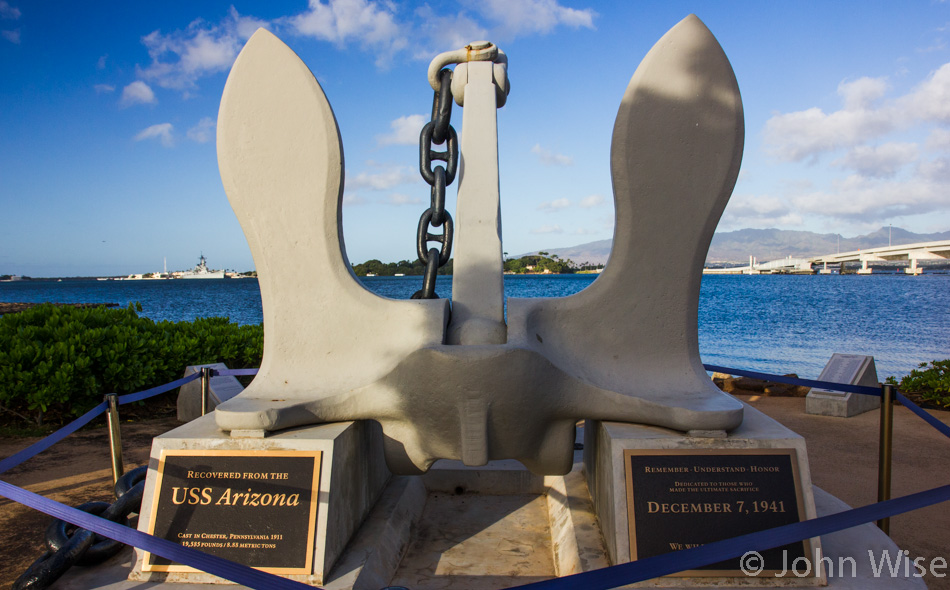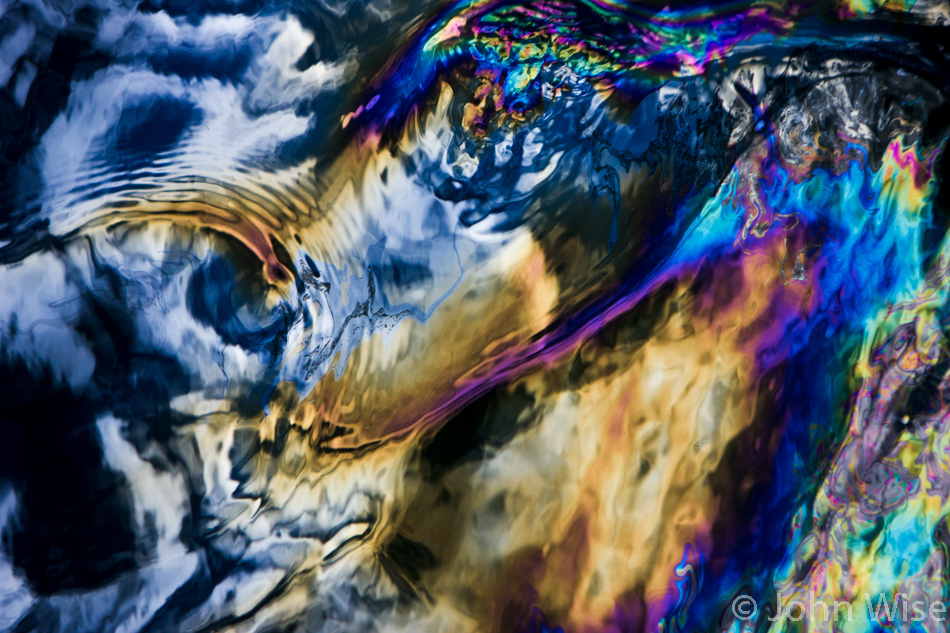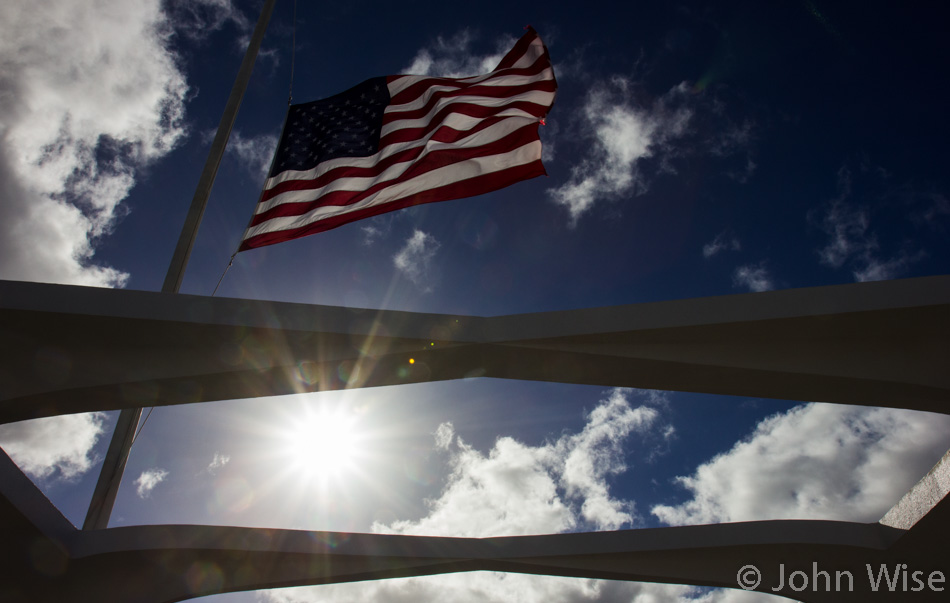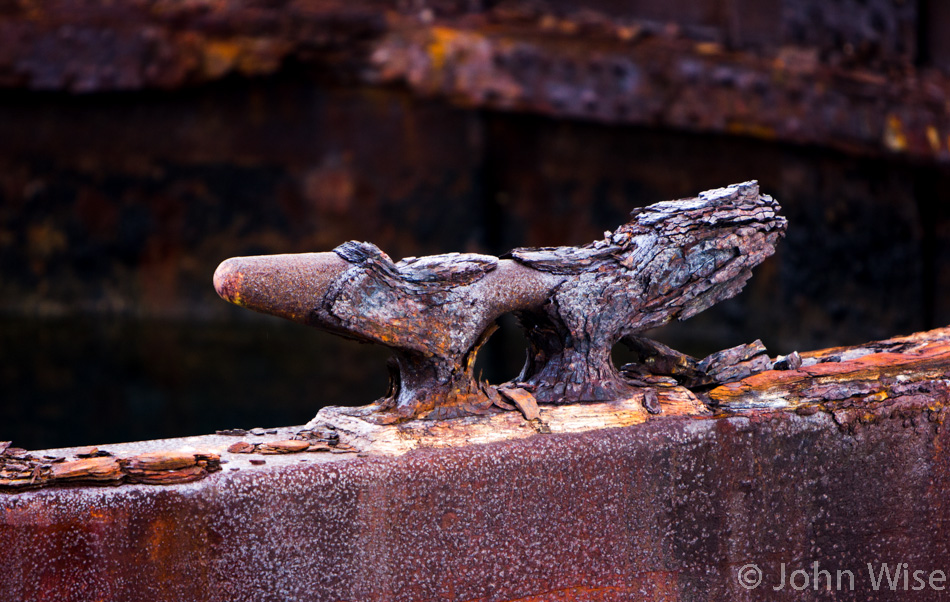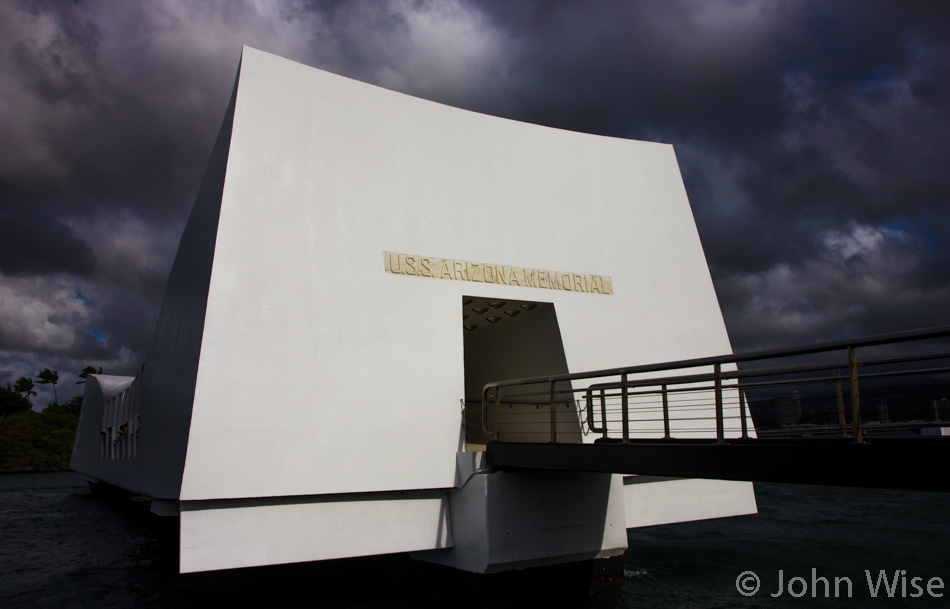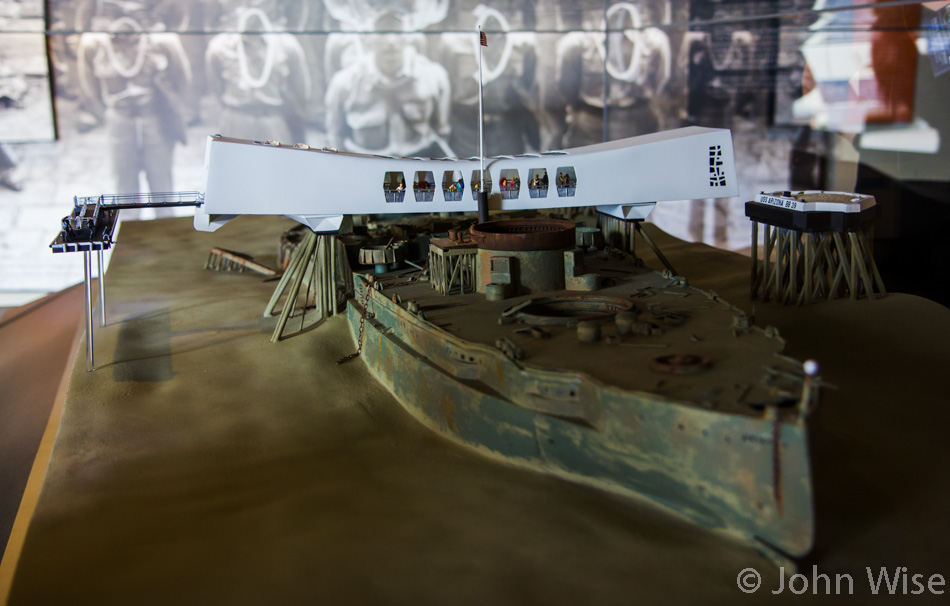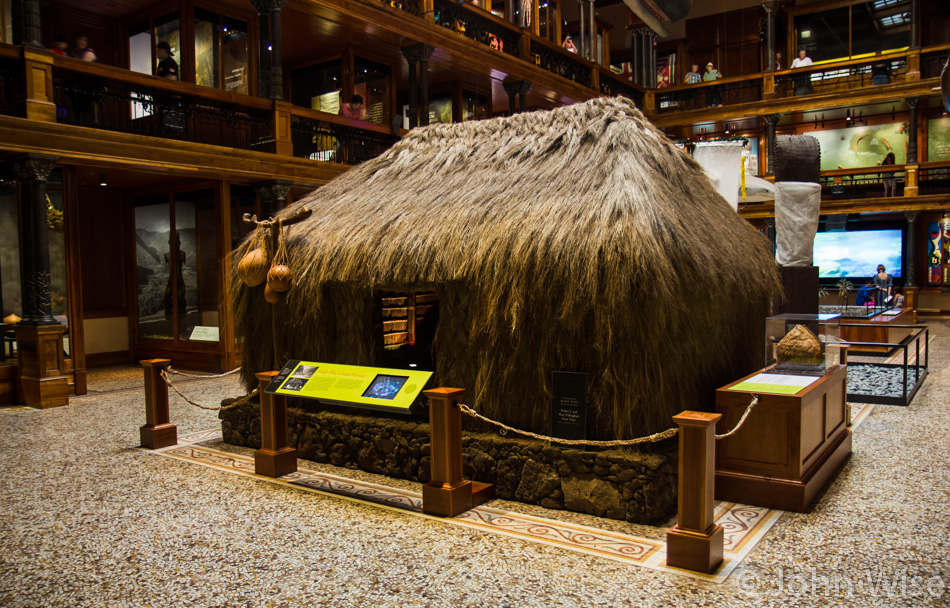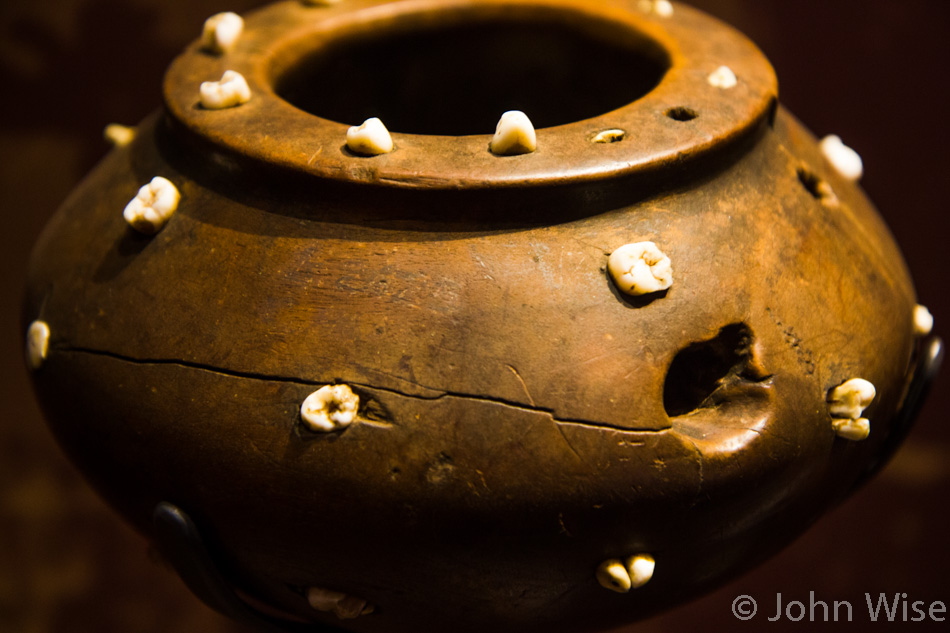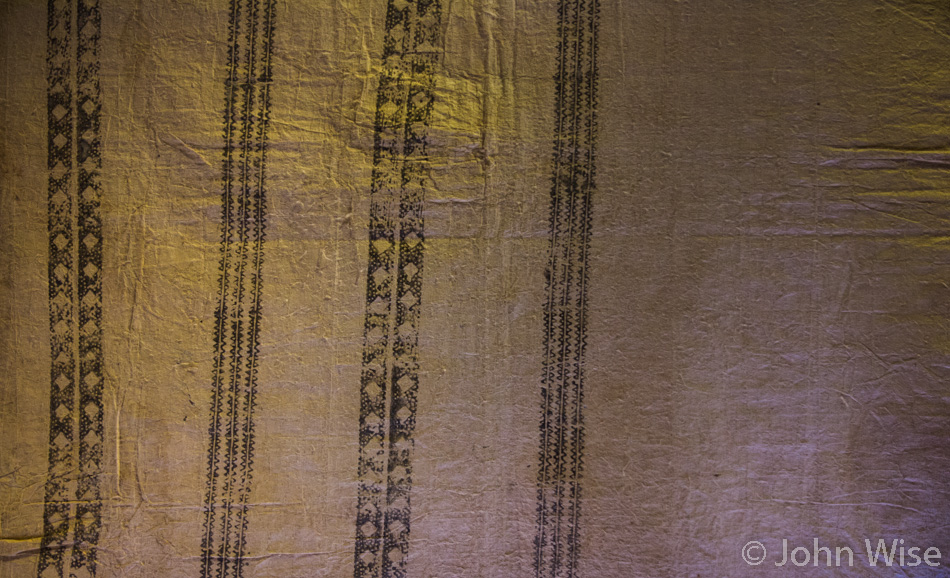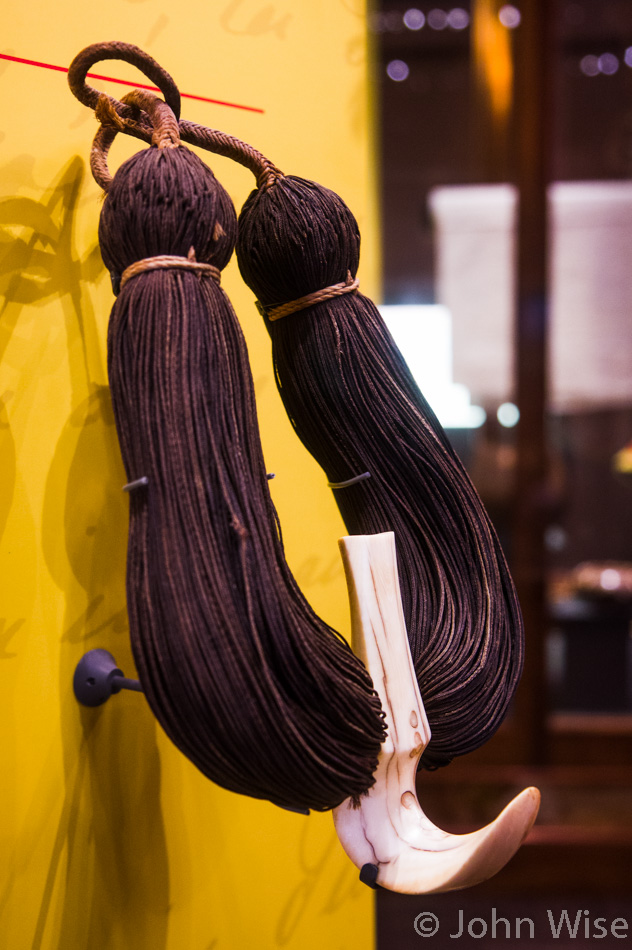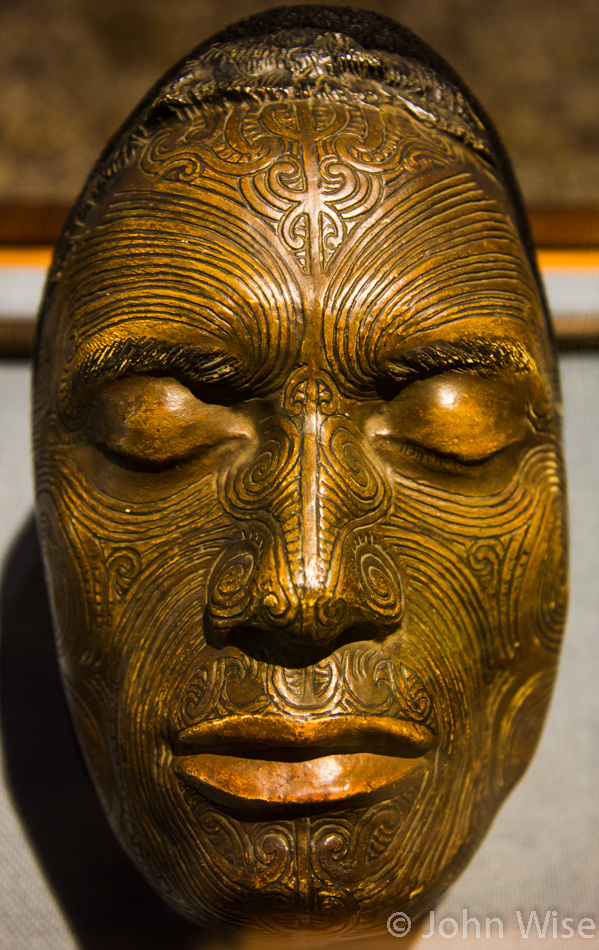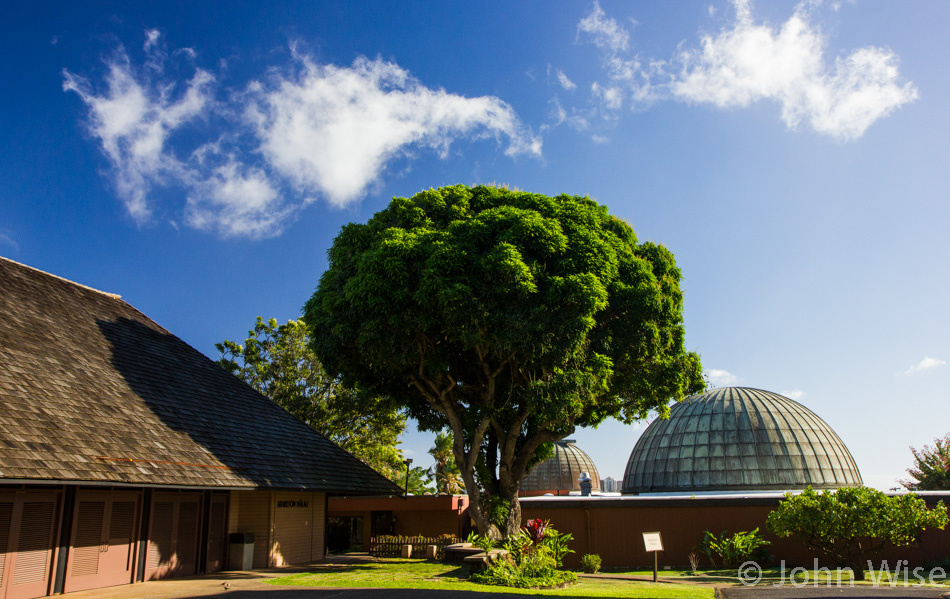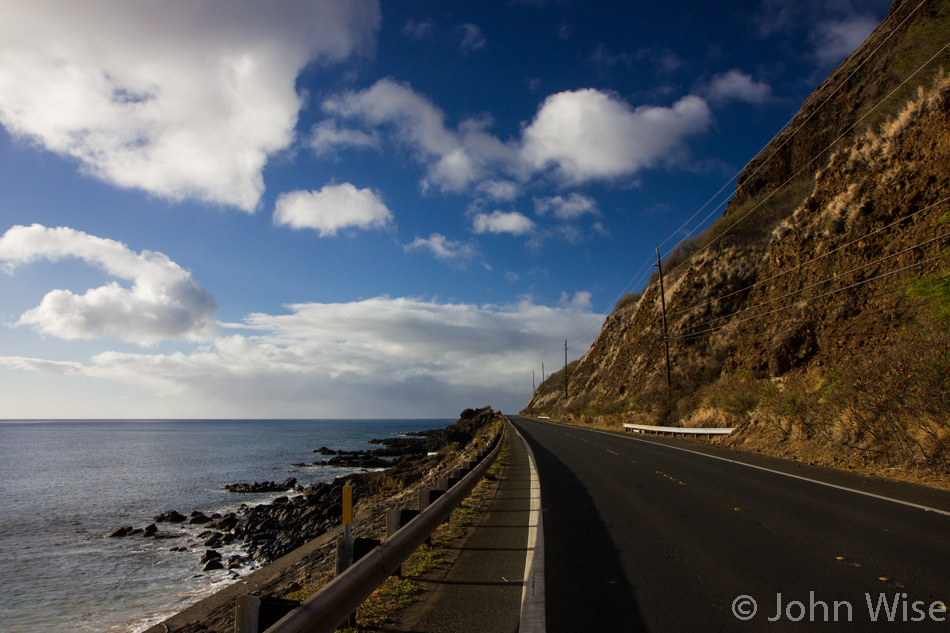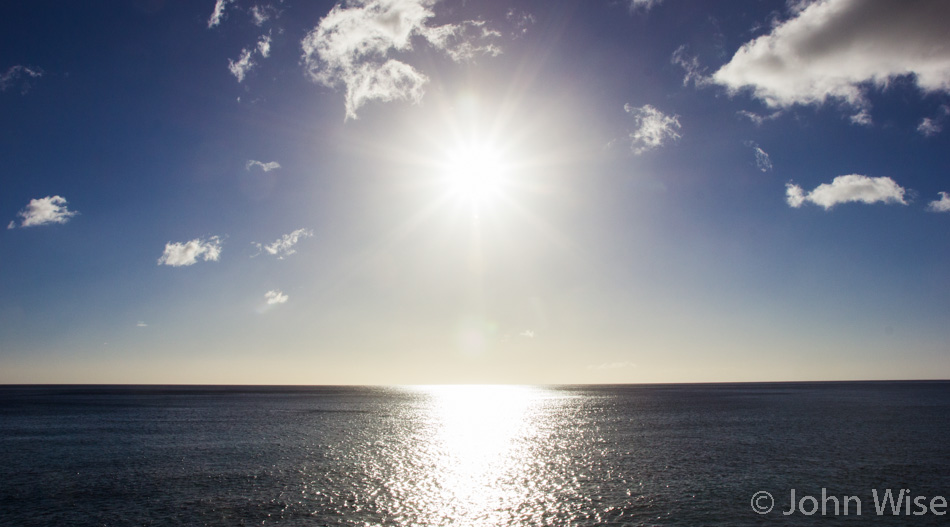
We wake here at Fortress Kahili Mountain, where the hot water flows to the shower, the electricity is working, the temperature is perfect, and the sky is aflame in the glory of the rising sun. Uh-oh, the coffee maker is not functioning; we’ll have to venture away from our enclave.
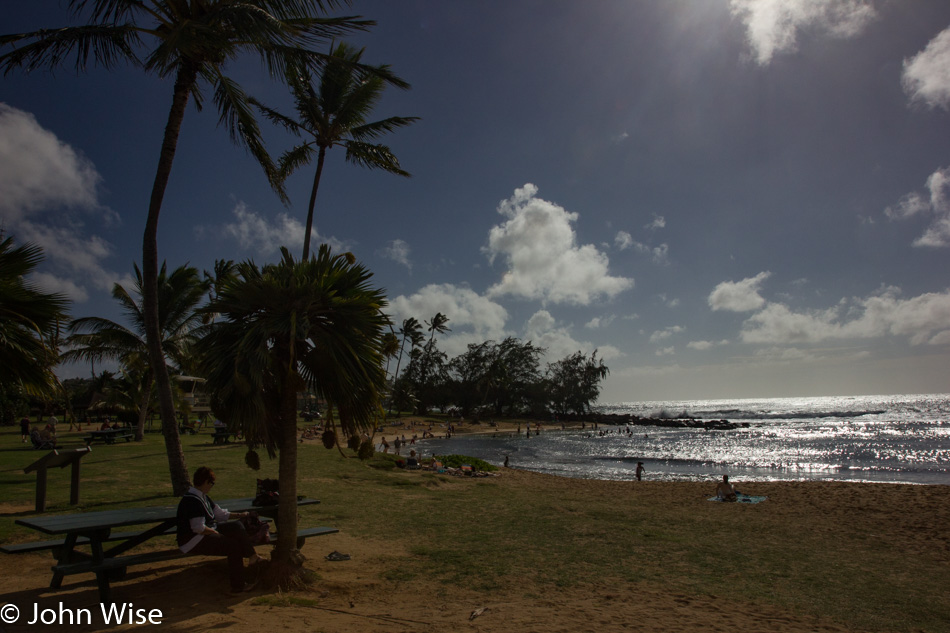
The crowds are out at Poipu, with the beach overflowing as tourists flock into the sea……NOT. The clouds are lighter than on the previous days, with a brisk wind coming from the east rearranging them quite quickly. While a large cloud or two will come along to blot out the sun, casting the beach into shadow, it too quickly moves on, allowing the sun to illuminate the turquoise waters. Caroline has been out there snorkeling but comes back to report that the fish are far and few between and then runs back.

When my two-legged fish finally returns to shore, she is cut and bleeding from encounters with sharp volcanic rock, but she is all smiles. She wishes I was out with her but admits that the current is treacherous. With a sudden change of mind, Caroline decides she’s not had enough though she heads to the car first for her river shoes to better protect her already bleeding feet and then is back in the surf searching for sea life.
The horizon clears while behind me, the clouds pile up, hugging the mountains of Kauai. The molten silver sea seduces all who gaze upon it, eliminating tensions and leaving little for the mind to produce in the way of words. This likely has much to do with why Caroline and I return so frequently to the ocean that washes our brains with waves that hypnotize us into tranquility.
By the time we leave Poipu, we need that coffee we never had, and Starbucks will care for us on that front while another stop at Da Imu Hut Cafe serves us some fried seimen noodles along with a teriyaki fried chicken & steak combo. Learning that this inexpensive joint will be closed for the next four days as they are closed on weekends, plus the closure for Christmas Eve and Christmas Day we commit to return tonight for dinner.
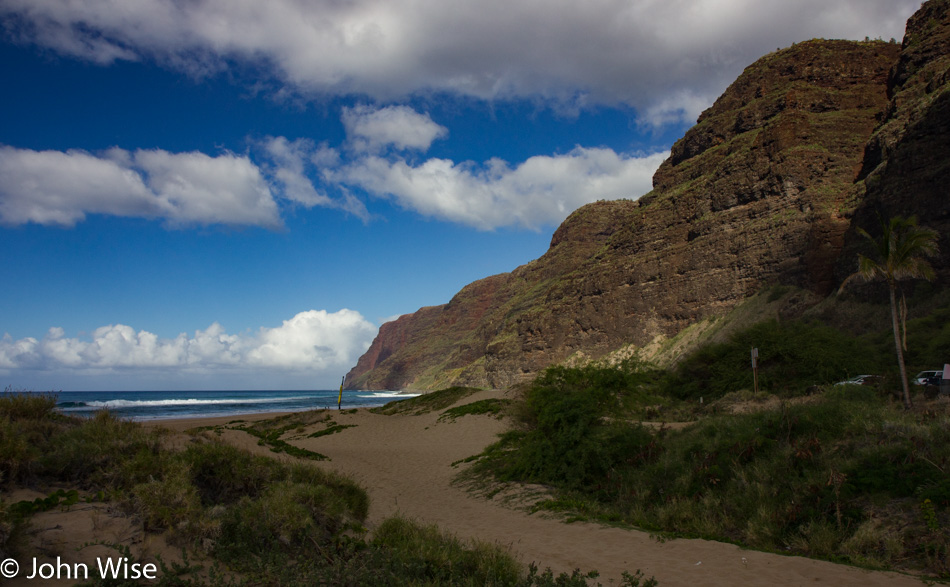
At a fork in the road, it’s up to a proverbial coin toss if we will head to Waimea Canyon or Polihale State Park at the west end of the island. Left it is, and for the next 16 miles, we are on a paved road, but after that, it’s almost five miles on a washboard dirt road that feels like 80 miles of mainland dirt road. It is abundantly obvious by now that we’ve never been in this area.
Without knowing what was ahead, the primitive road was, at times, intimidating, especially not seeing anyone else on the road. We maneuvered the ruts and sandy spots with relative ease in our small rental car. Finally, at the beach and the end of the road, we found maybe 40 other cars parked down there. On our right is the mountain range that stretches across the Napali Coast, while on our left is the longest beach on all of Kauai.
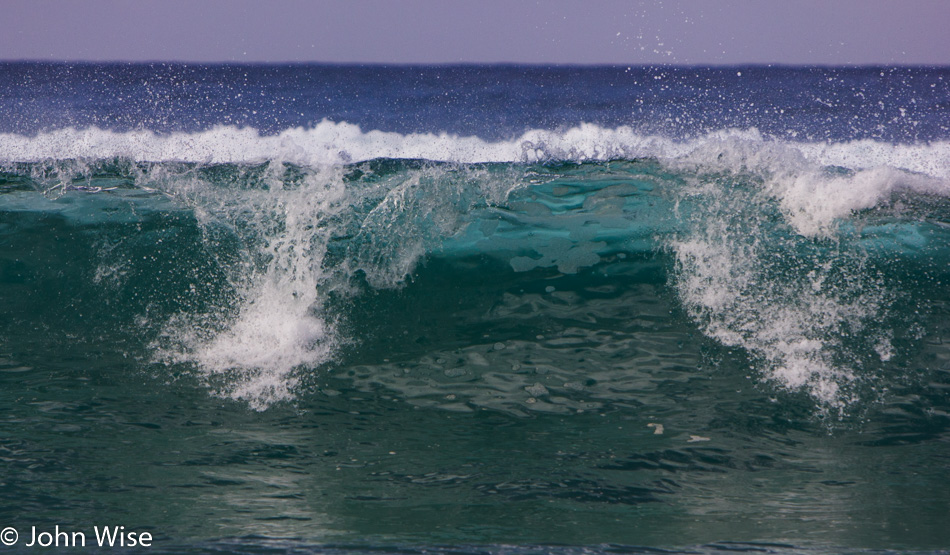
This place is a treasure, and spending a day out here should be on everyone’s to-do list.
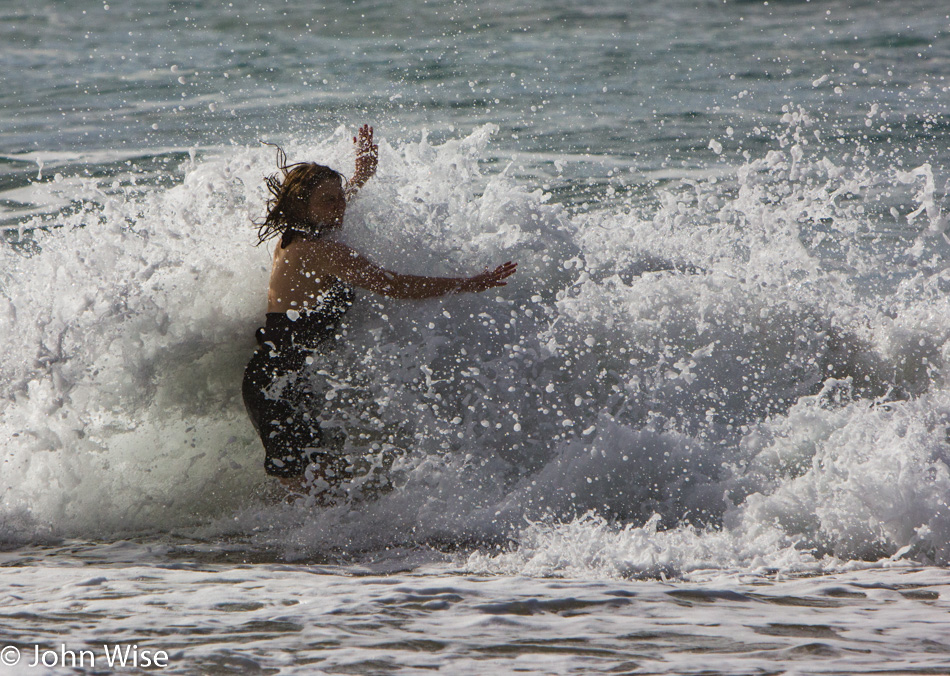
Caroline throws herself into the surf, or maybe more accurately, the surf pummeled her into submission, knocking her down. Having grown up in a world of flatwater, she is ill-equipped to deal with the crashing waves of the Pacific and is easily toppled by pounding surf, but as usual, she is having fun.
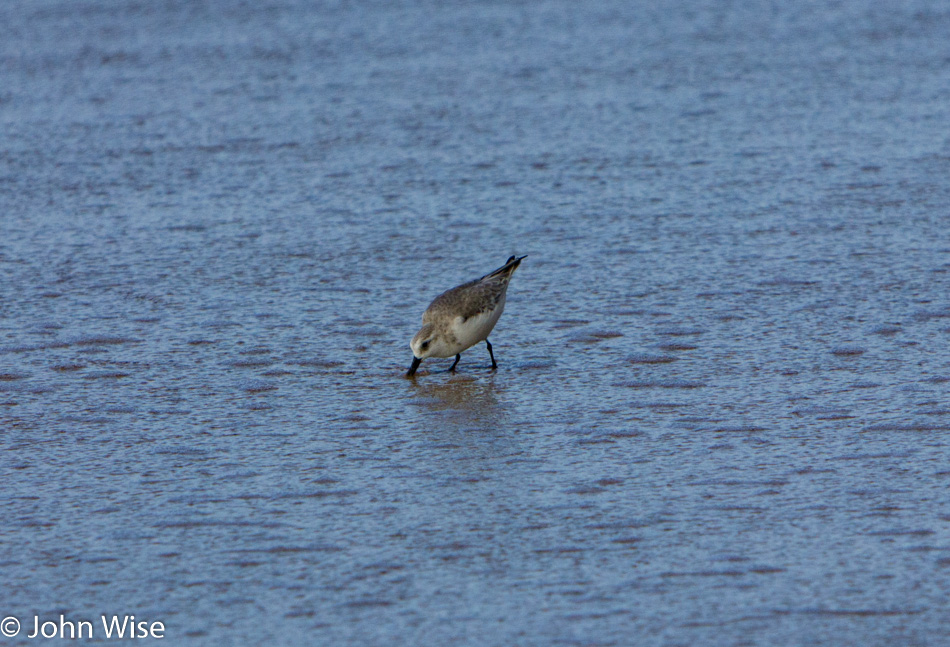
I instead opt for watching shorebirds, clouds, people, Caroline’s frolicking, and the dark green mountains with streaks of red earth cutting into them.
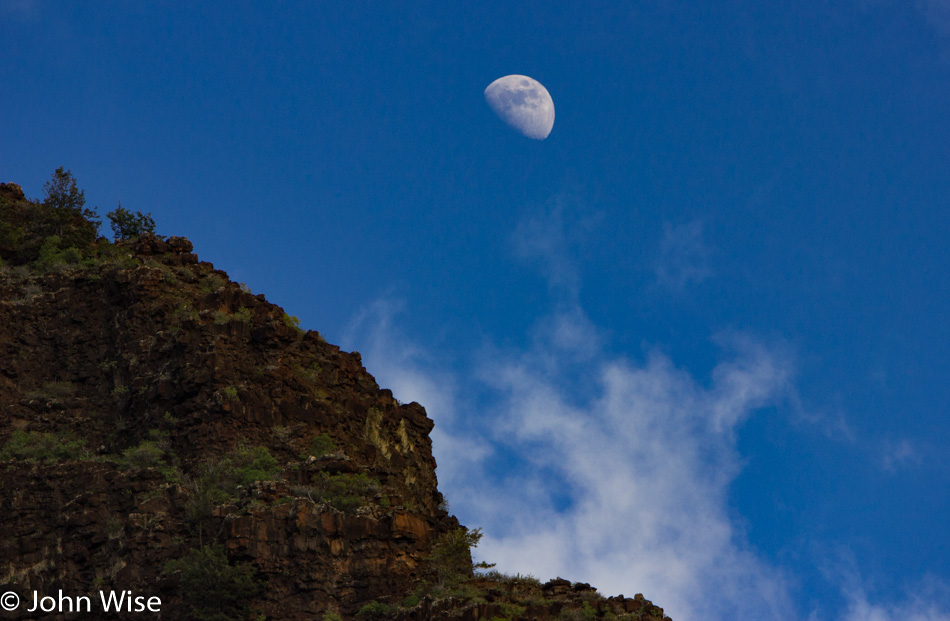
The air is so clean out here you can make out reliefs on the moon and almost believe you can see mountains rising off the surface. Behind me, the ocean gives no hint of its rise and fall other than what breaks at the shore. As that surf pulls back, the flat beach momentarily takes on the appearance of a mirror reflecting the few clouds that are overhead at any given moment. Surfers work the furthest set of waves in the distance while people on bodyboards are riding the next set. Waves at the shore are the domain of swimmers who are playing it safe where their feet are within reach of the sand below them.

We stay long enough for my face to start crisping, and that’s even with sunblock on and this hat that two years earlier was worn down the Colorado River in the Grand Canyon and just this past summer went with me down the Alsek in Canada and Alaska. The truth is that my complexion is an easy target for a wrathful scorching sun looking to victimize those of fair complexion. Even with the sunburn setting in, we hung out a bit longer, and lucky us as some whales not far from shore were spouting off, sadly though there were no breaches.
On our way out of town earlier, we would have been smart to pick up refreshments because the 16-mile stretch of road and five dirt miles are without services. By the time we finally do get back into the car, we are parched and race back to Waimea for a stop at Ishihara’s to rehydrate.
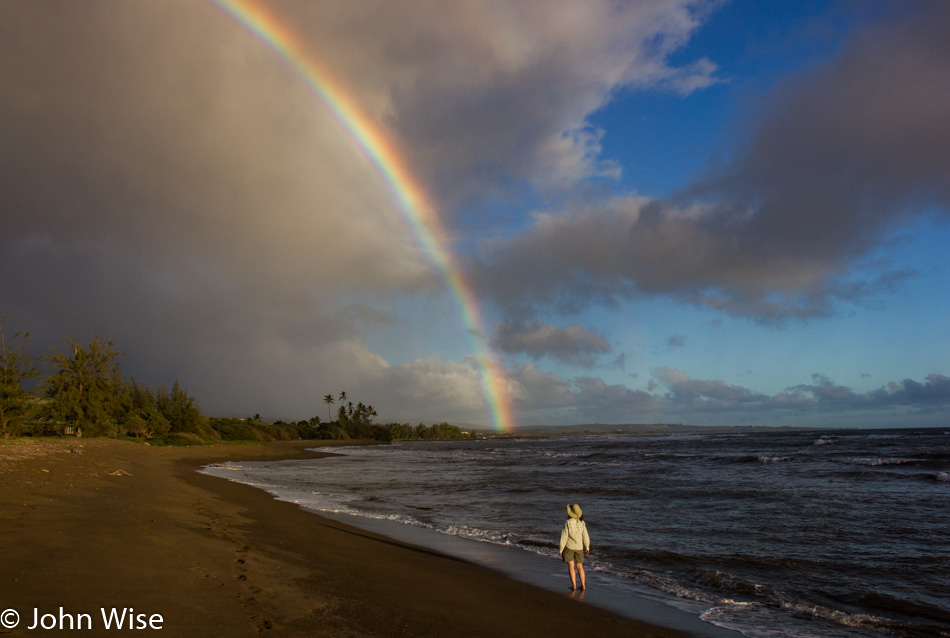
With our thirst quenched, the idea of giving in to a little something sweet was sounding quite appealing, so we stopped at JoJo’s Shave Ice for their famous #2 with macadamia nut ice cream topped with guava, lilikoi, and mango syrups on the shave ice. As we walk out the door, we are greeted by yet another glorious rainbow. This prompts me to wonder out loud if Hawaiians care about seeing these things when they probably see a dozen or more a day.
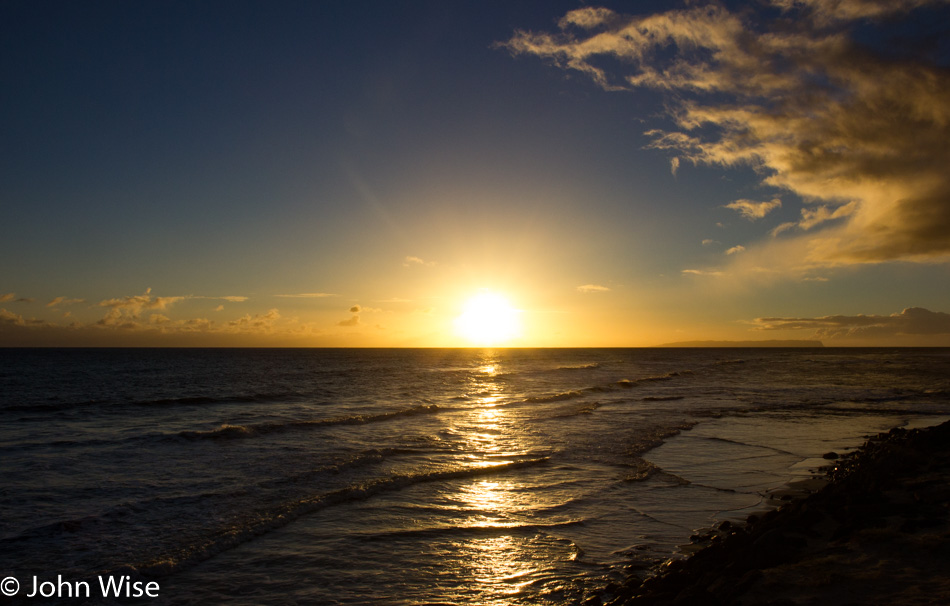
It’s the first day we have been bathed with perpetual sunlight, even when it’s raining in one direction or the other. As sunset falls upon the middle of the Pacific, we have taken up a vantage point that has afforded us a view of Ni’ihau over to the right, and while impossible to see in this view, we have been spotting the arched backs of passing whales and their spouts of mist shooting above the surface of the sea.
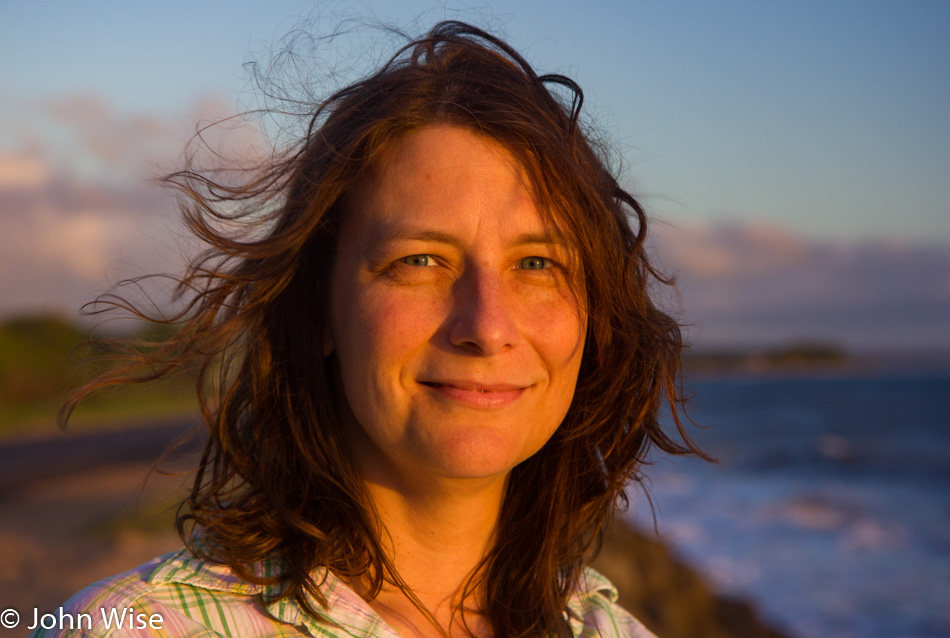
As the sun crawls lower in the sky, readying itself to dip below the horizon, our lonely spot on the shore is no longer so lonely, as others have recognized the location as a desirable one to be witness to the end of the day.
Suckers for local flavors and the knowledge that Da Imu Hut Cafe will be closed for the next four days, it was established earlier that we’d be back, and sure enough, that is exactly where we find ourselves for dinner. We split a Lau Lau and a Loco Moco. By now, if you haven’t picked up on it in previous blog entries from this trip or the many others, you will start to notice that food plays a large role in our travels, especially local fare. Maybe you could suggest we visit L&L Hawaiian BBQ in Arizona or California? Well, that’s like eating Chinese food in Alabama or Mexican in New York. Foods indigenous to one area are typically poorly represented in another, as local palates have expectations for authenticity. Even in these areas where a particular food originates, it is somewhat uncommon to see tourists in the local joints, as many of them require weak-tasting approximations, added sugar, a side of ketchup or ranch, and some specifically boring children’s dishes such as cheese pizza or chicken strips.
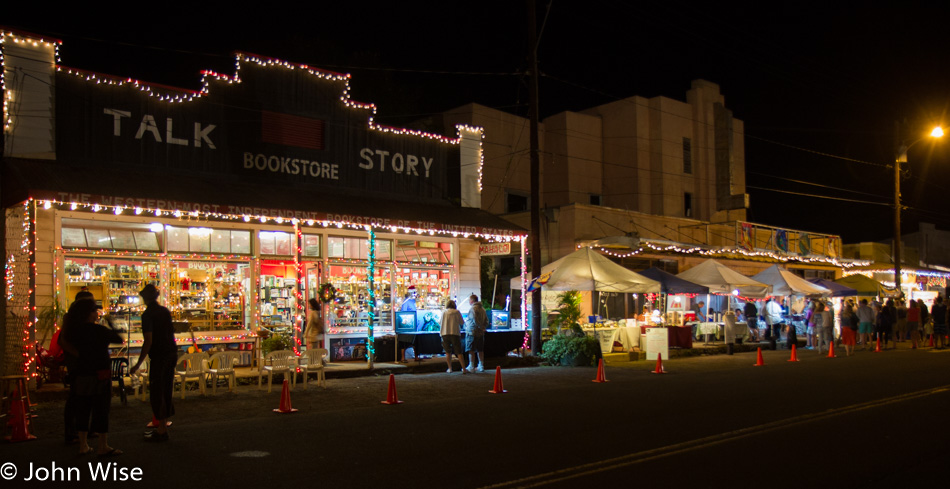
A few days ago, shortly after arriving on Kauai, we visited Talk Story Bookstore and learned that on Friday night, there was an Art Walk through Old Town Hanapepe; we had to come back. Strolling the streets sharing a citrus-spiced cup of hot tea followed by a slice of caramel pecan apple pie while window shopping the various art galleries made for a great way to spend the early evening.
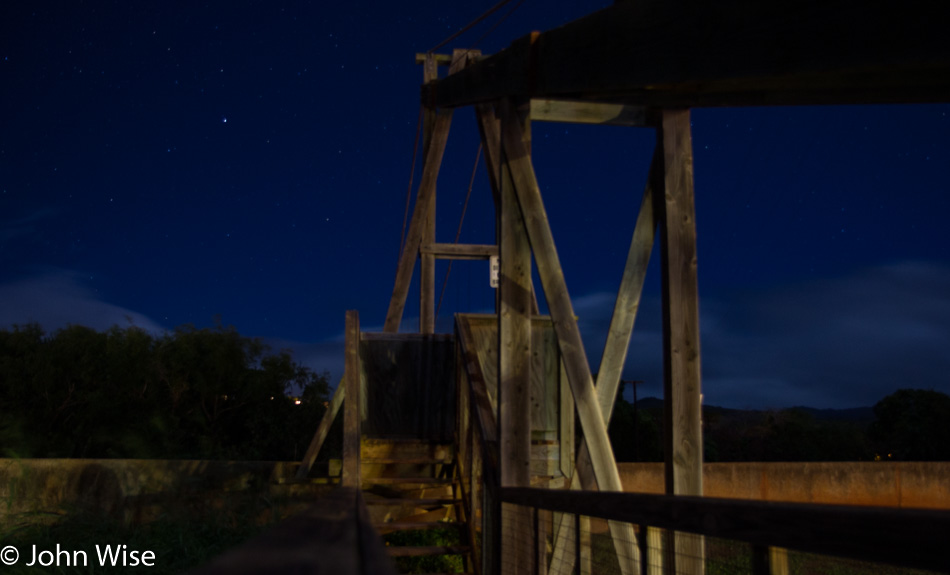
We celebrated the end of the fourth world here on the 13th b’ak’tun, or Maya date 13.0.0.0.0, which we read as December 21, 2012, and take solace in knowing that the apocalypse was either narrowly missed or it is so insidious as to be occurring outside our consciousness. I’ve waited for this day for 20 years since first learning about the “Mayan Prophecy” from Terence McKenna, and while it might play well to the story if I could tell you that we are here in Hawaii just in case it was the end of the human reign of earth, that would be a lie. By the way, this is the historic swinging bridge that crosses the Hanapepe River and was our last stop of the night before heading back to Kahili Mountain and the beginning of a new Mayan calendar.
